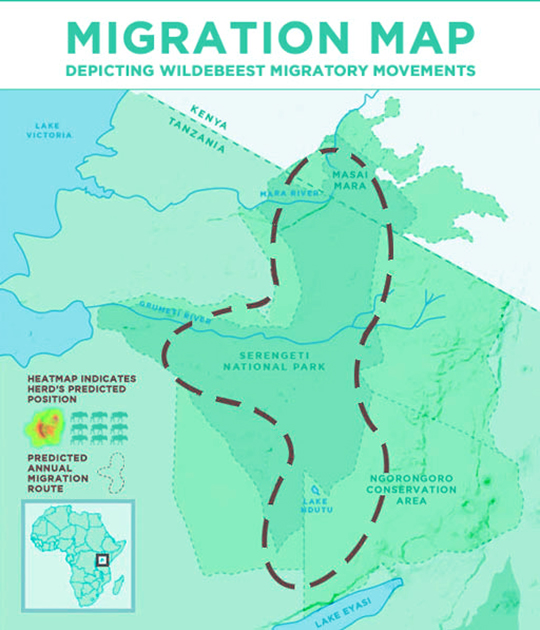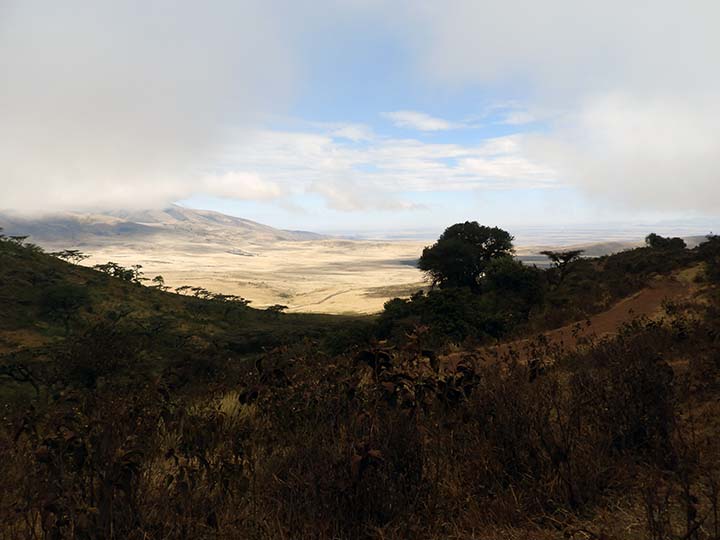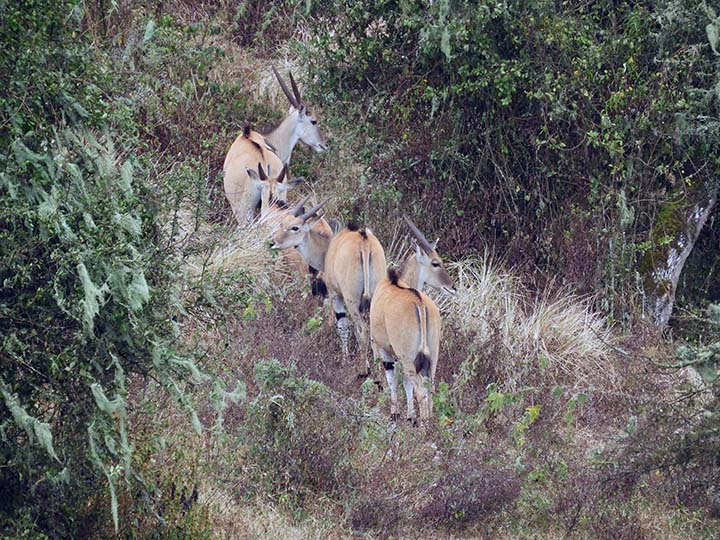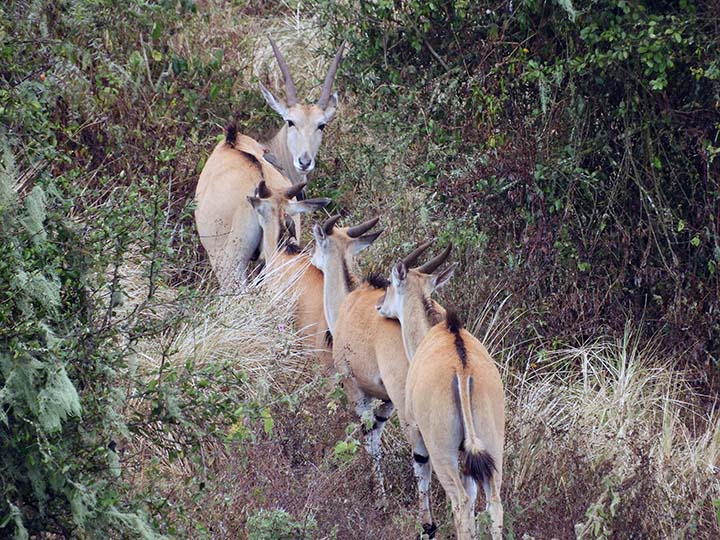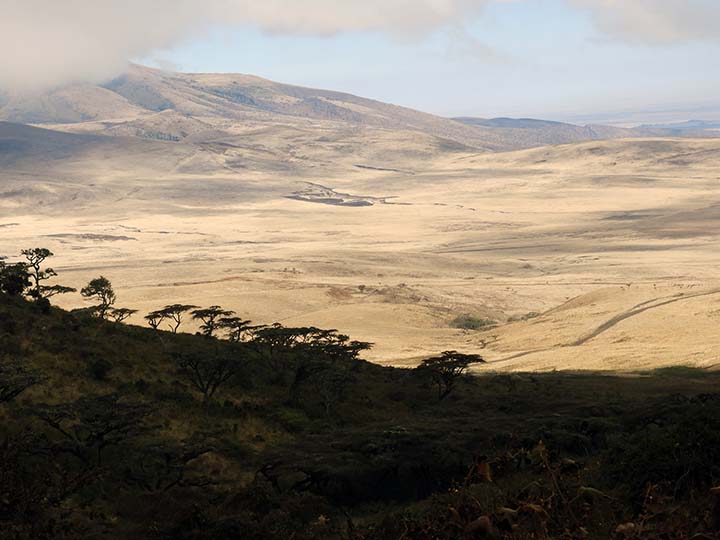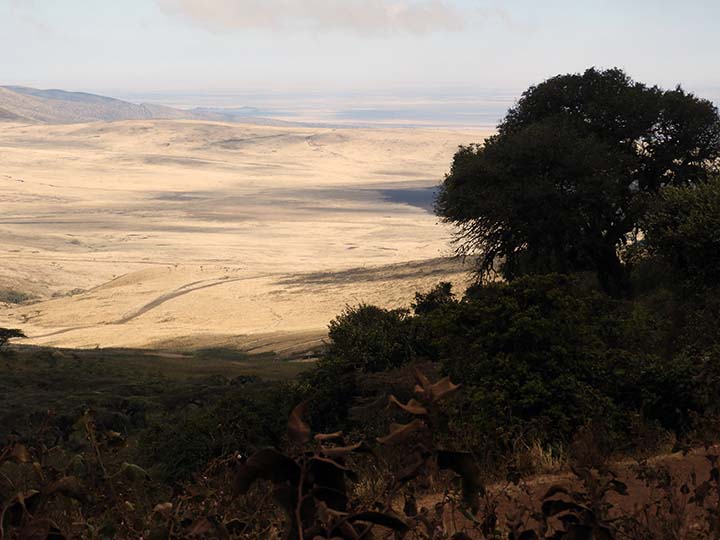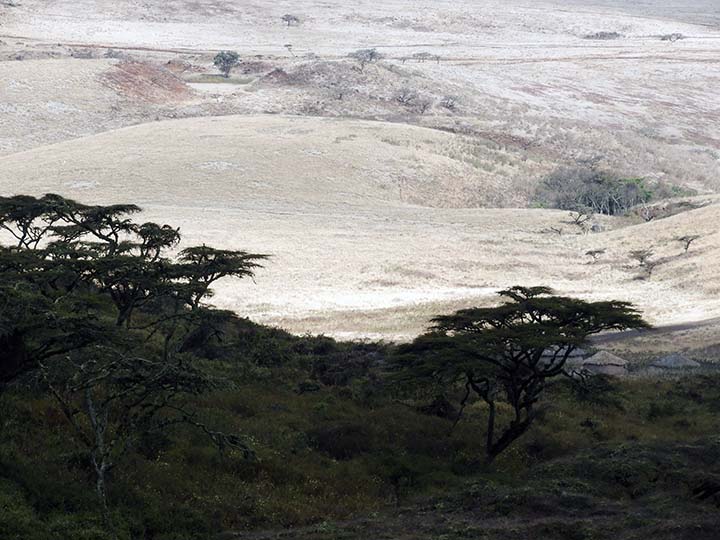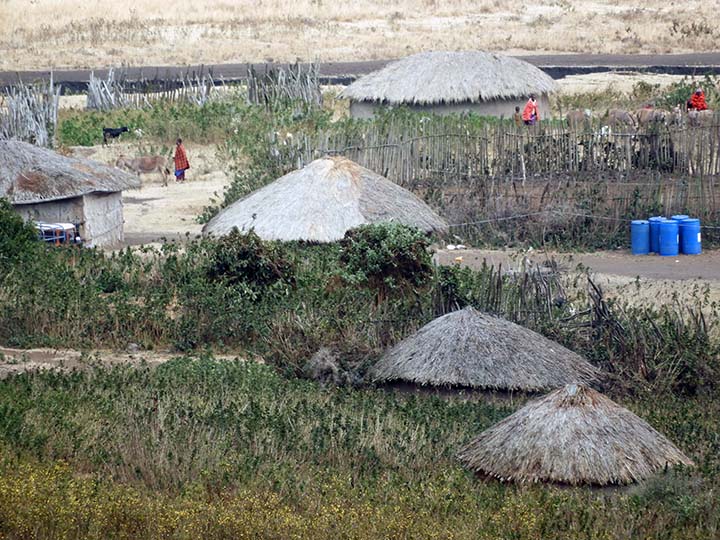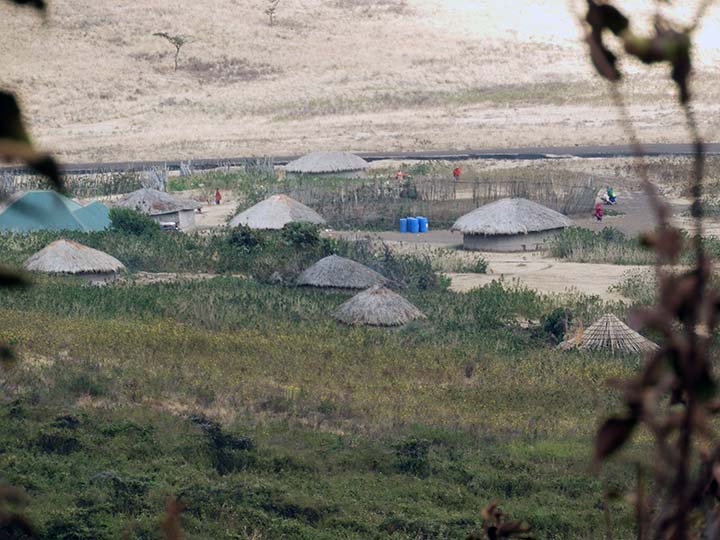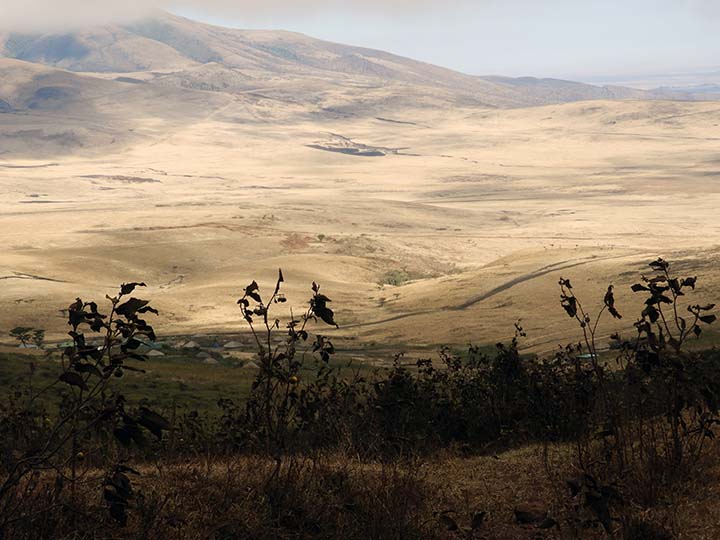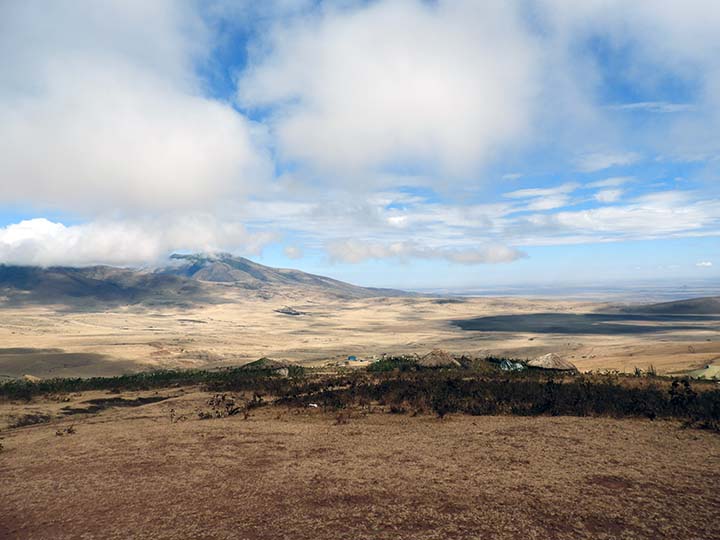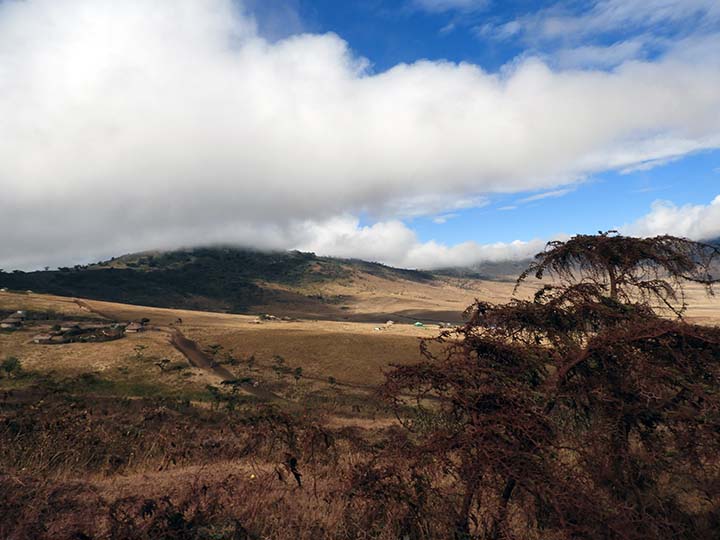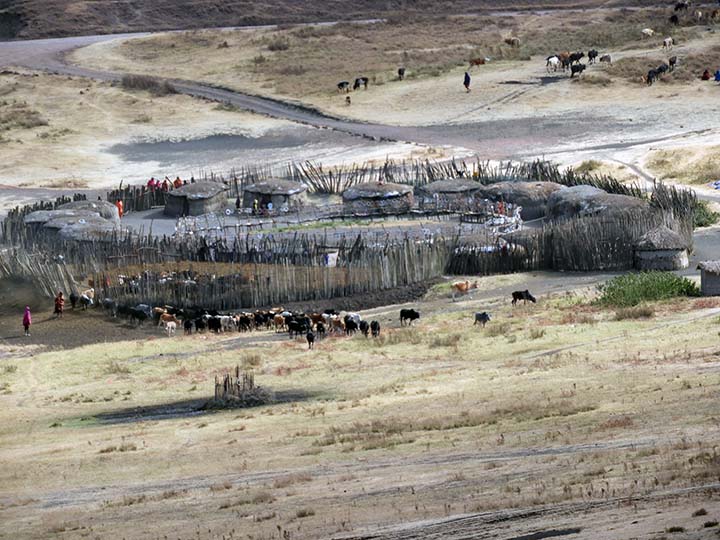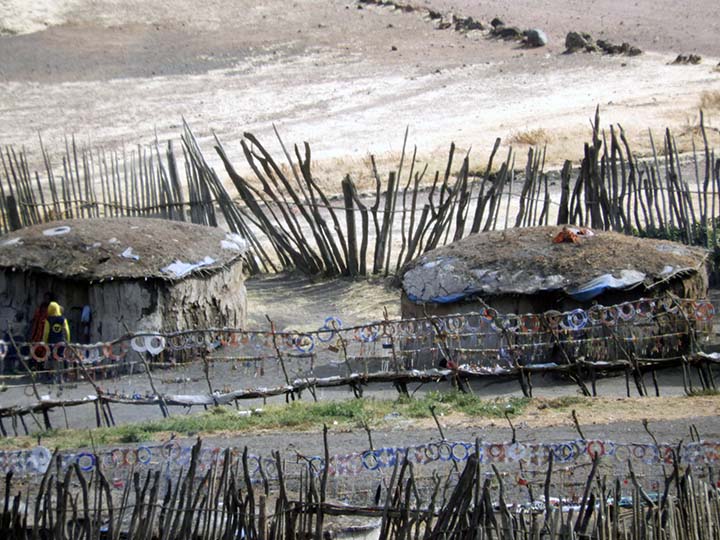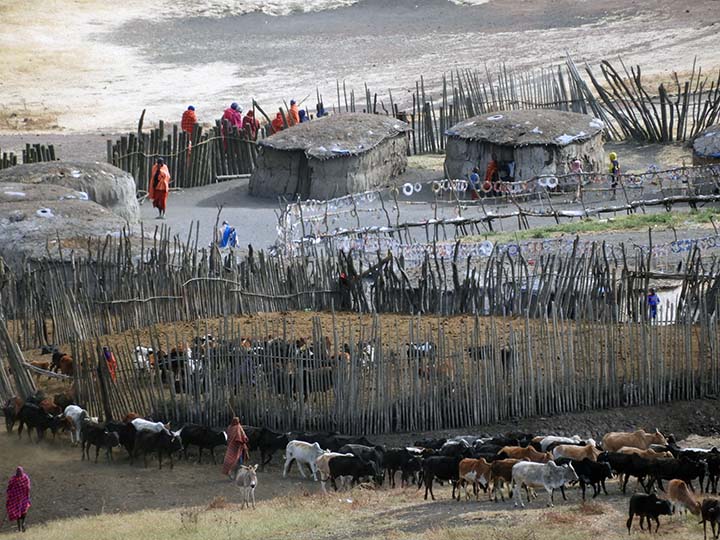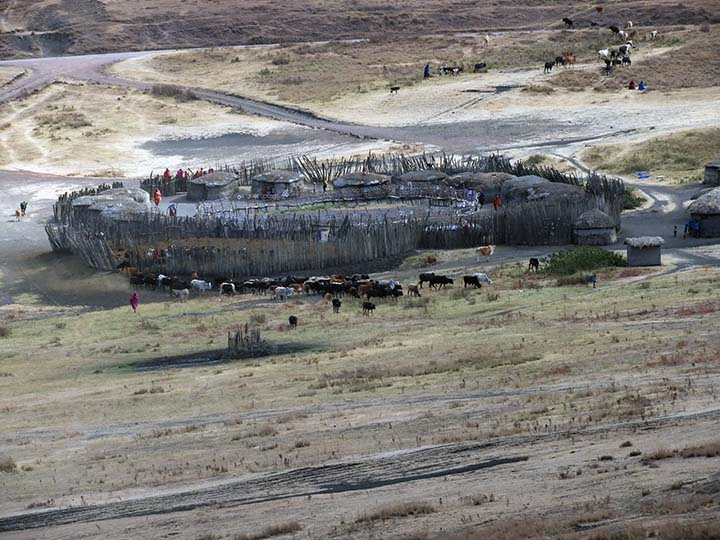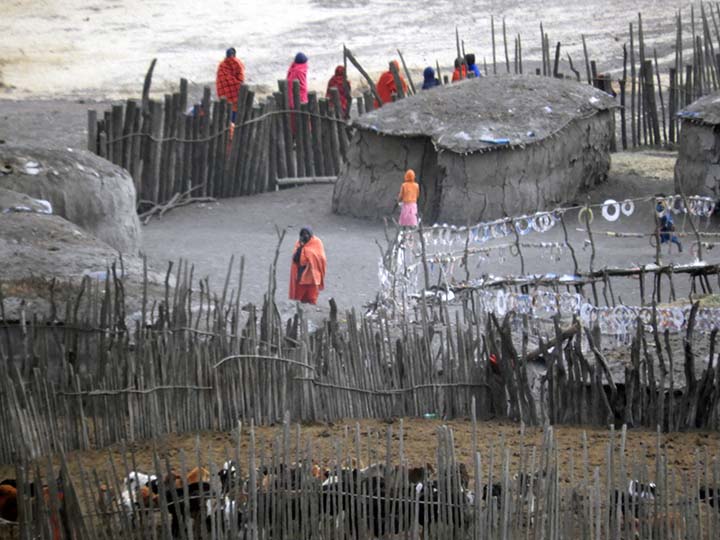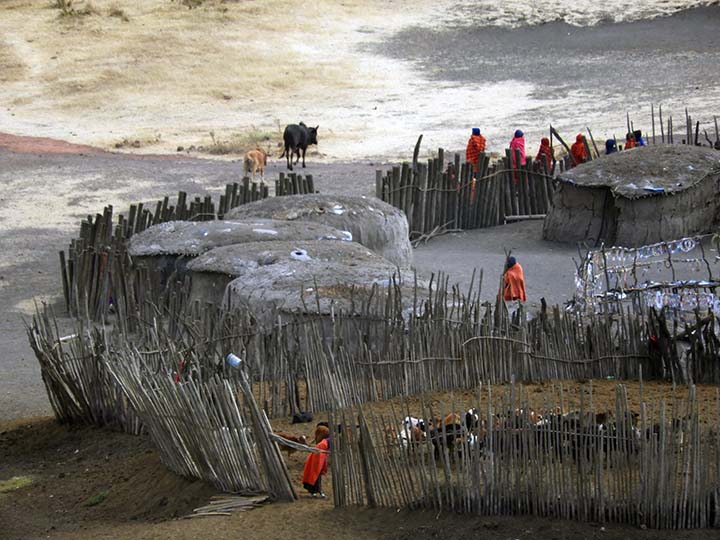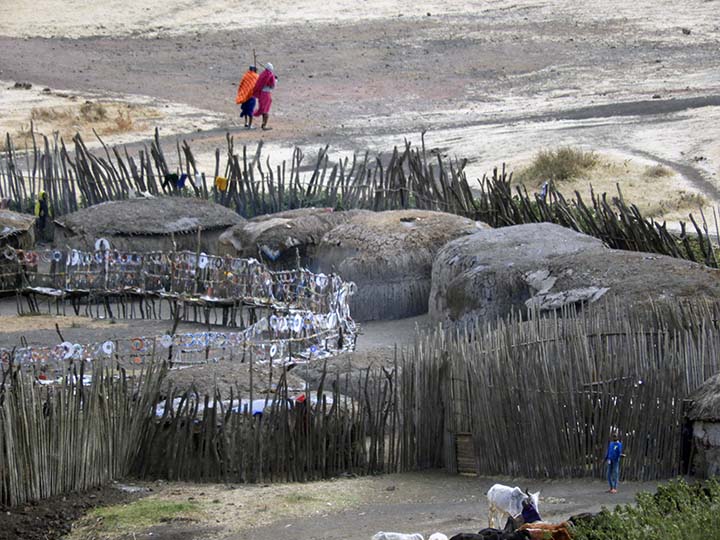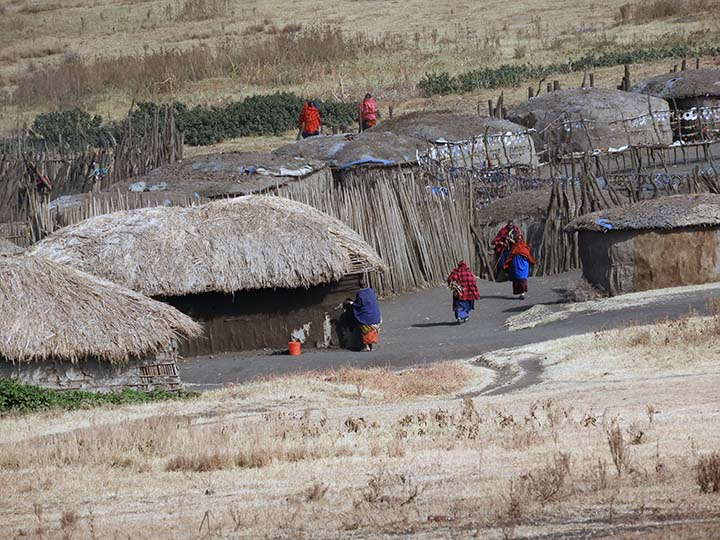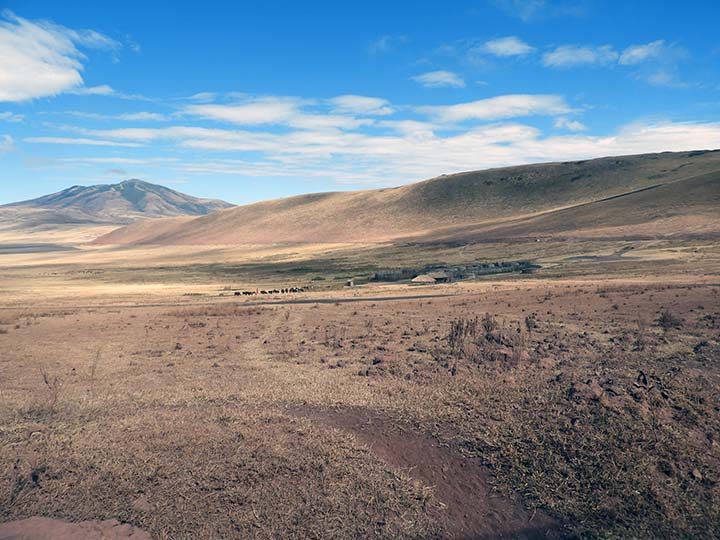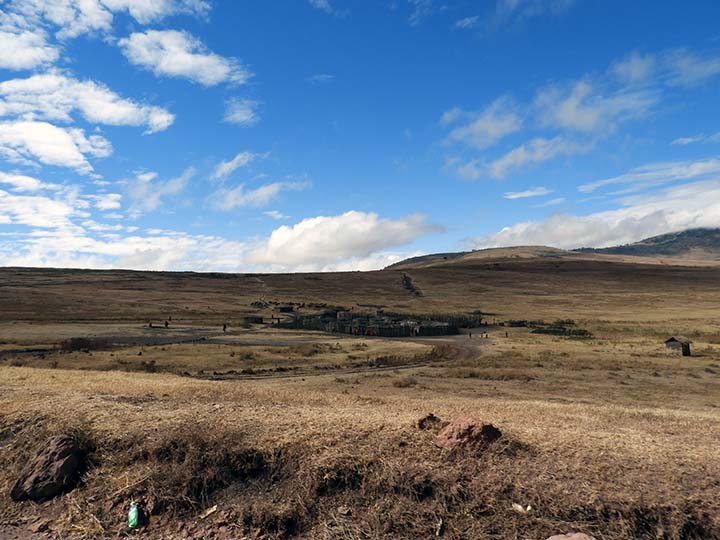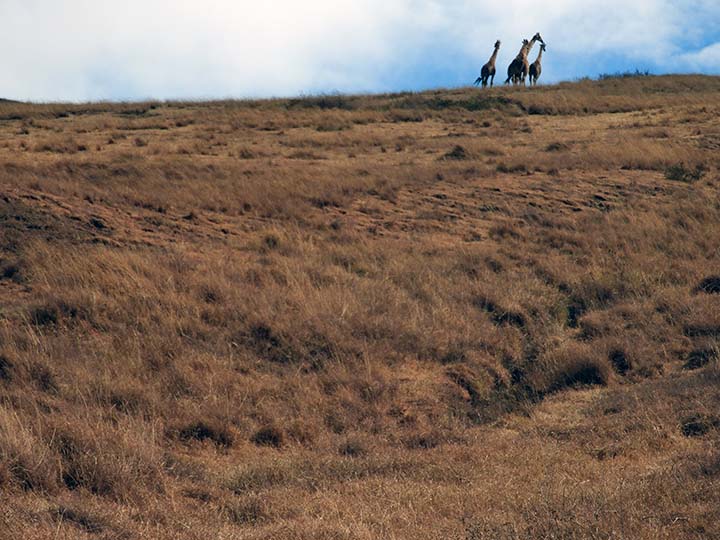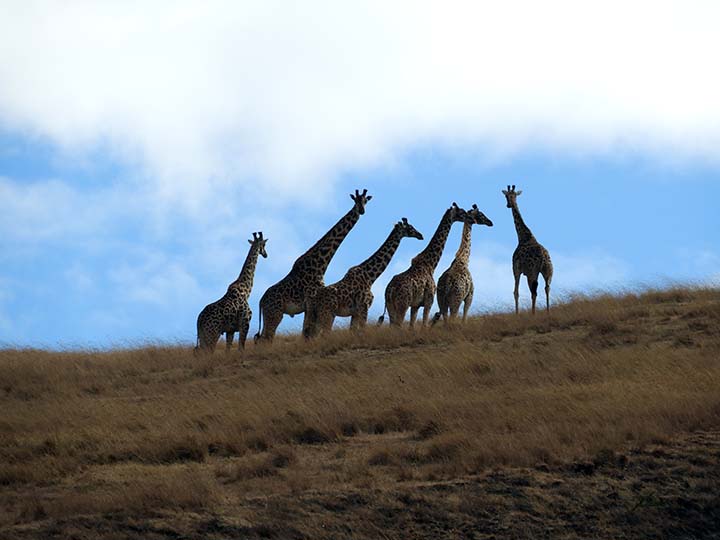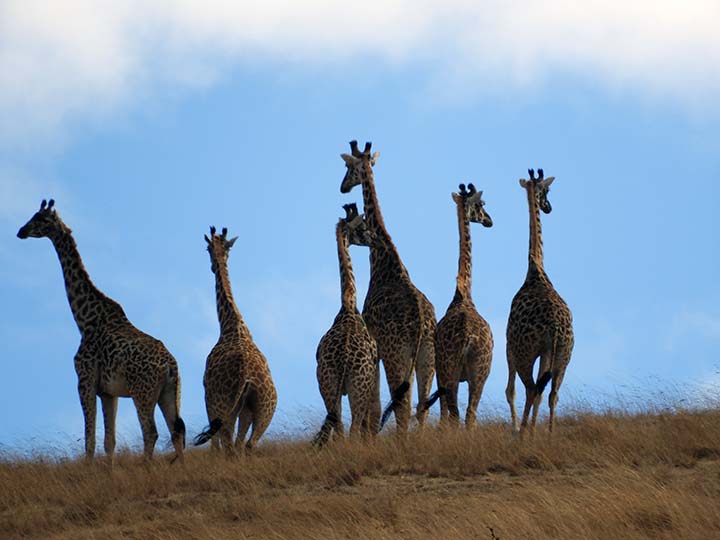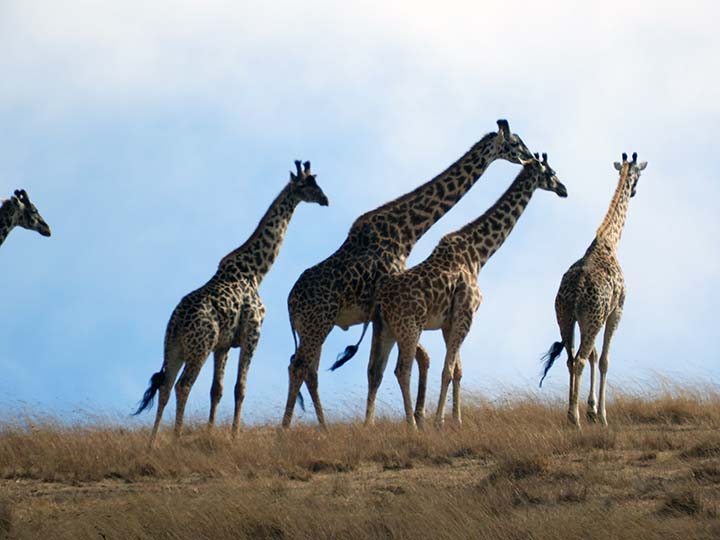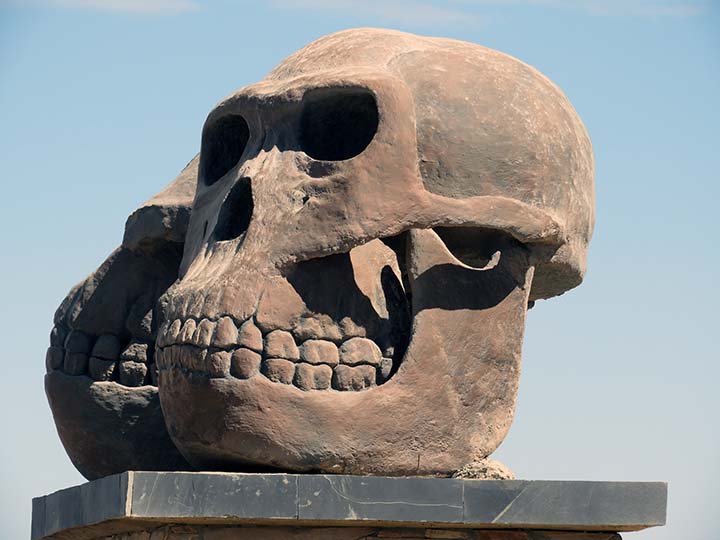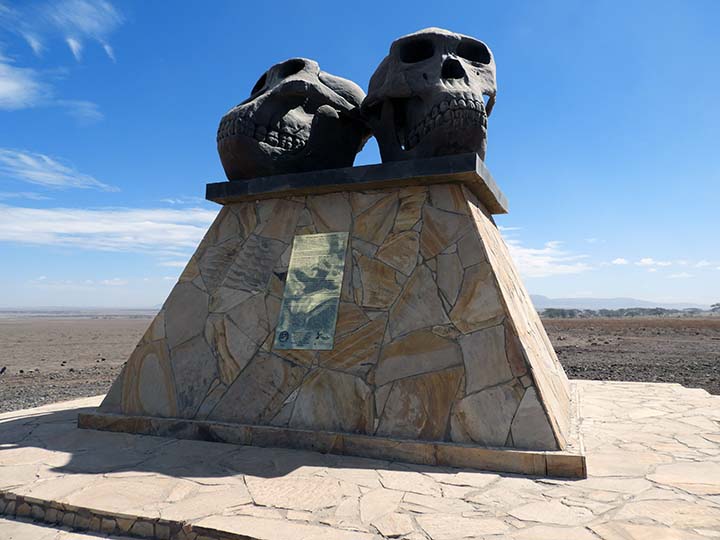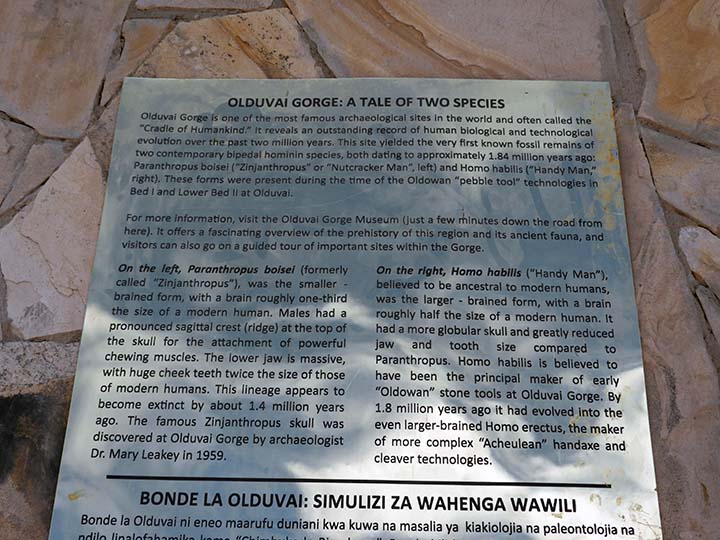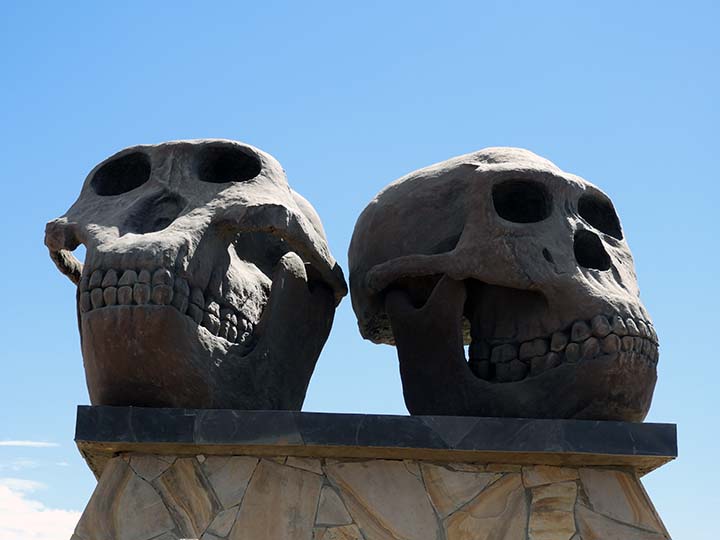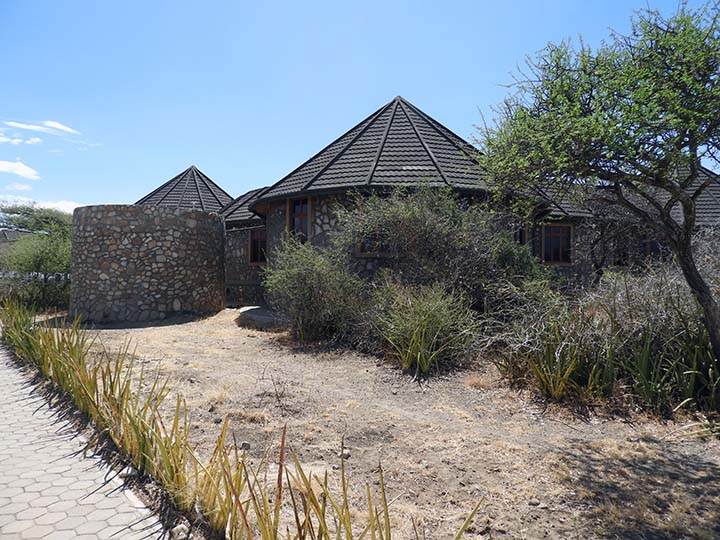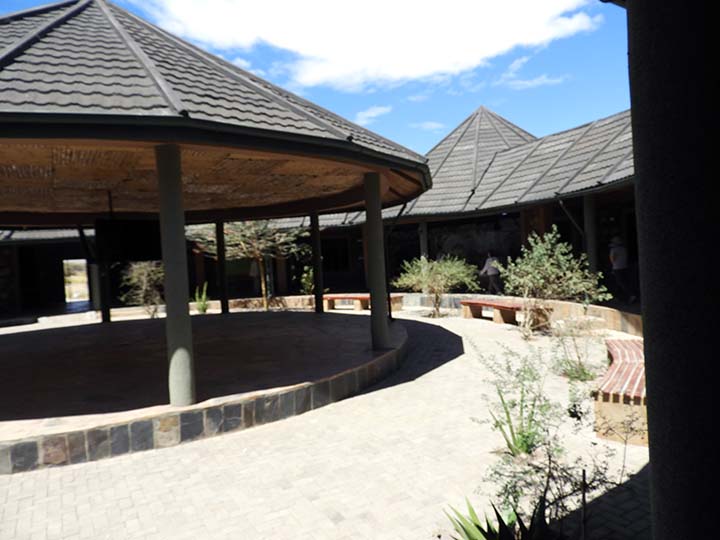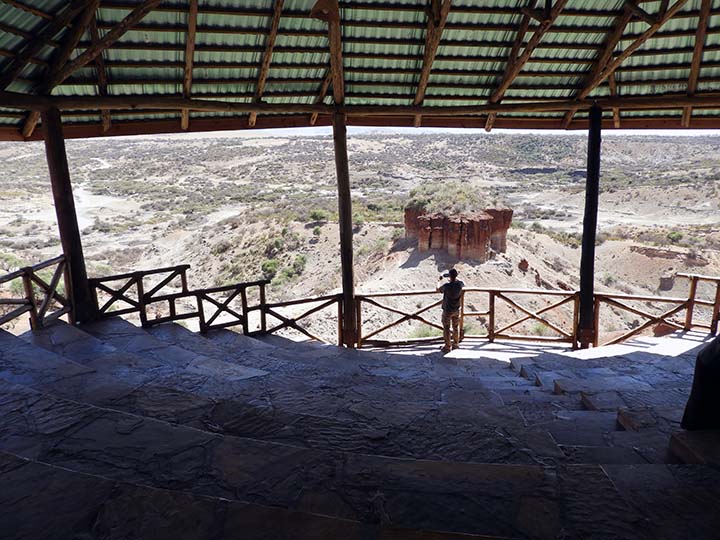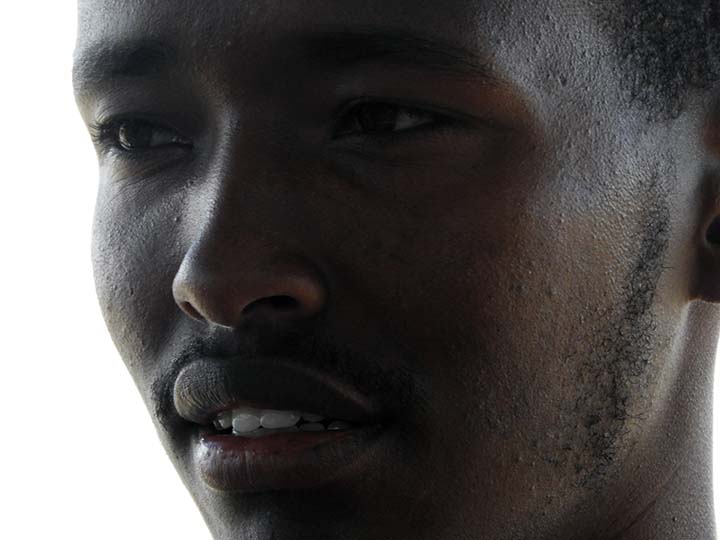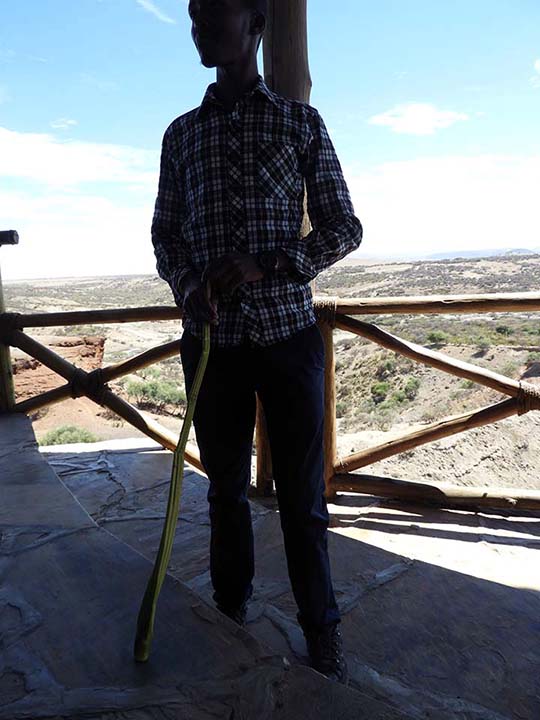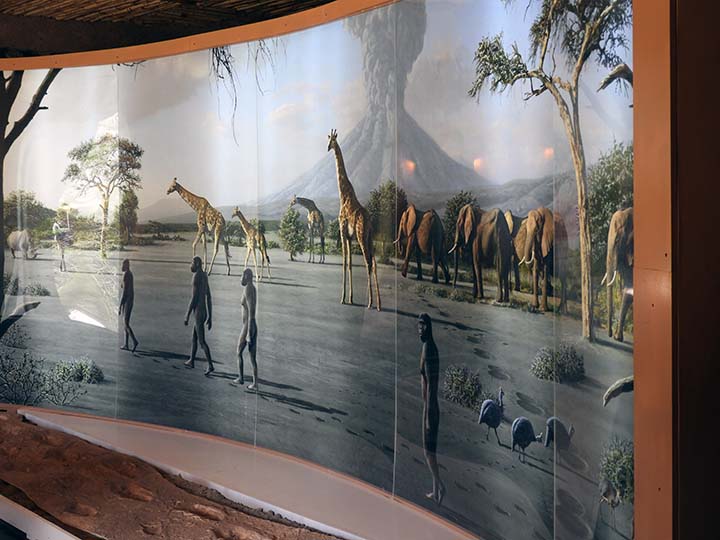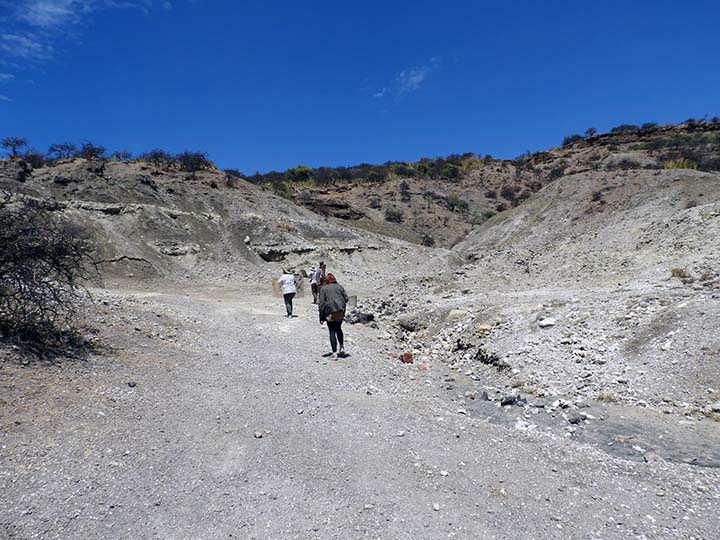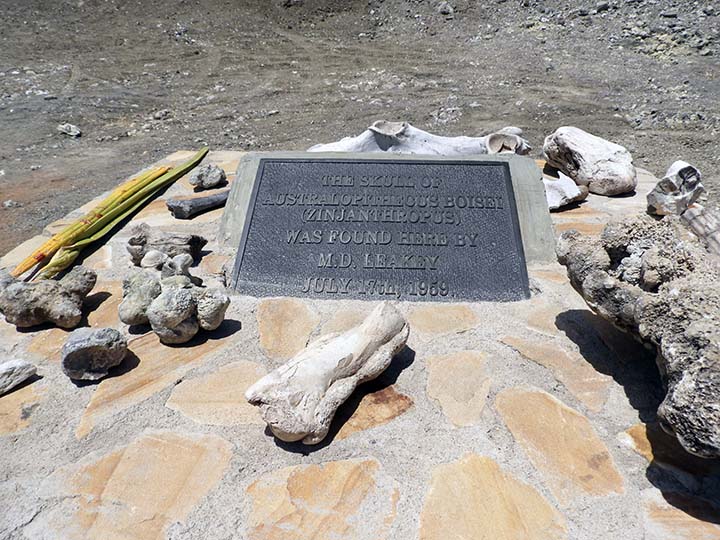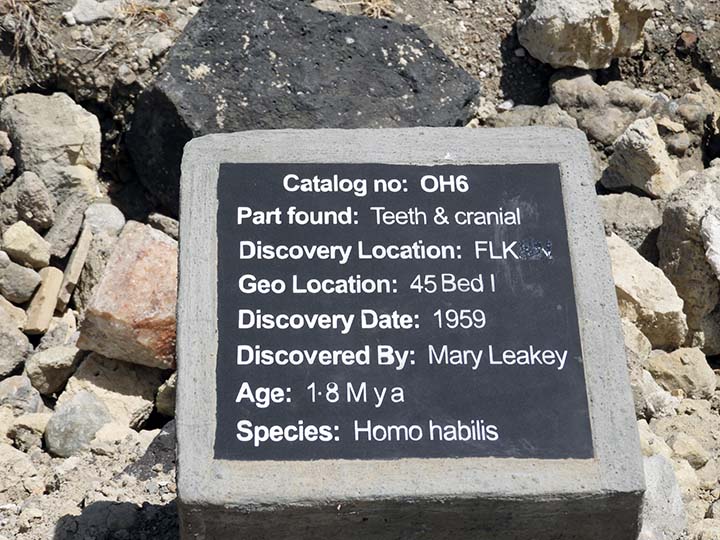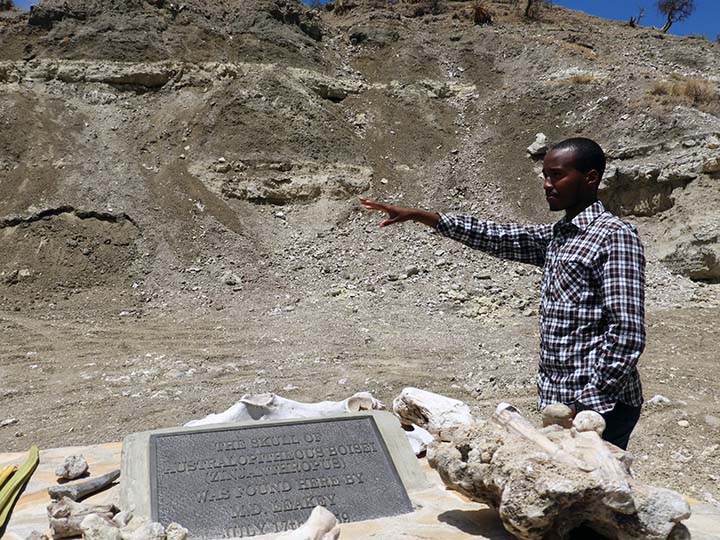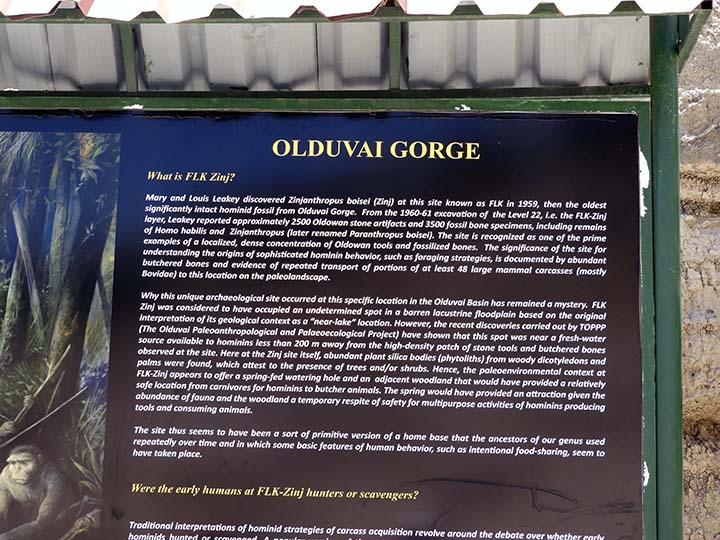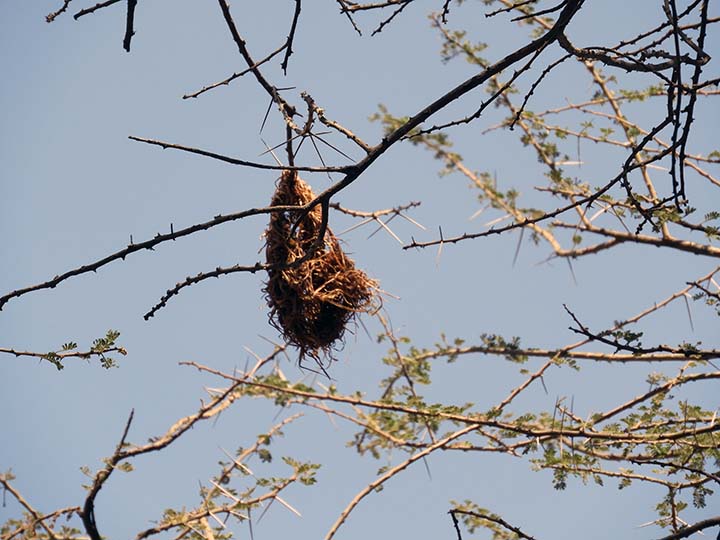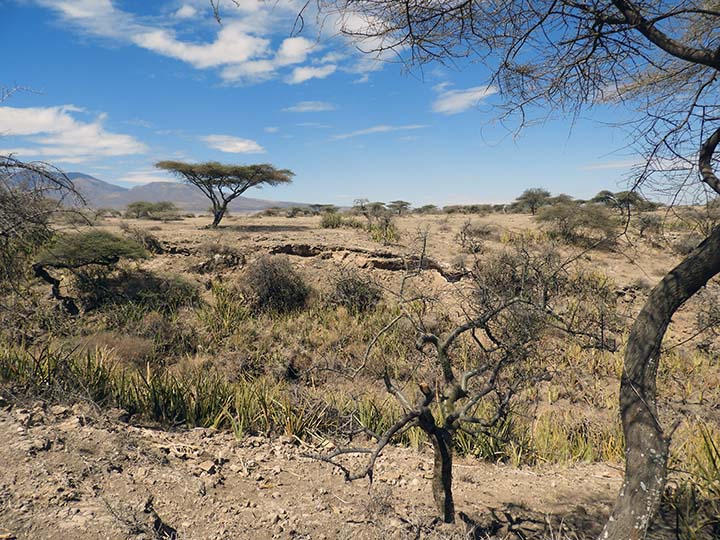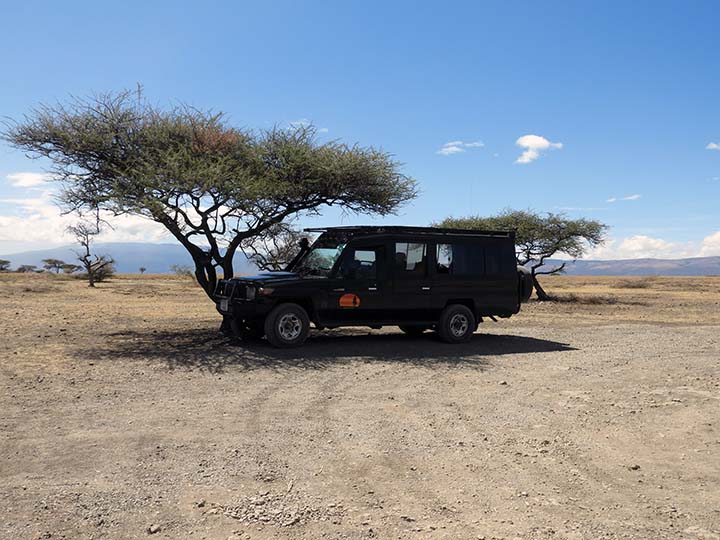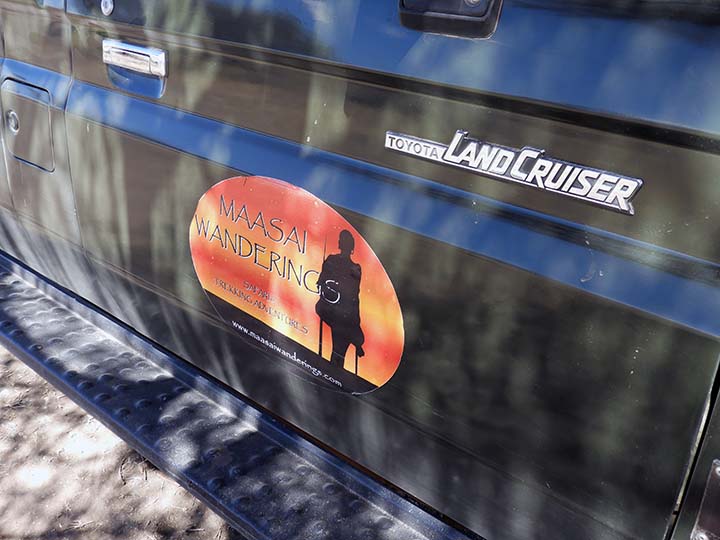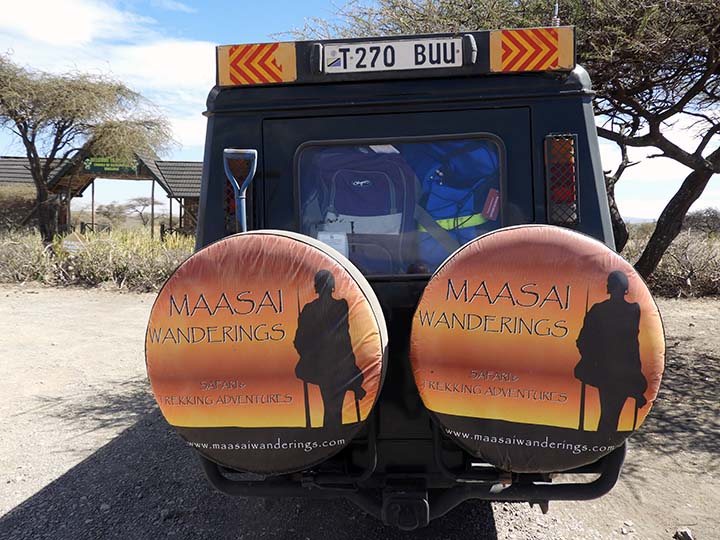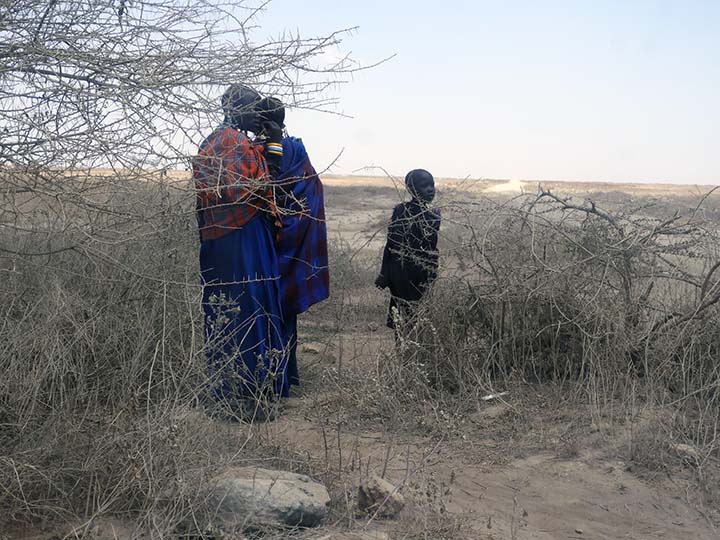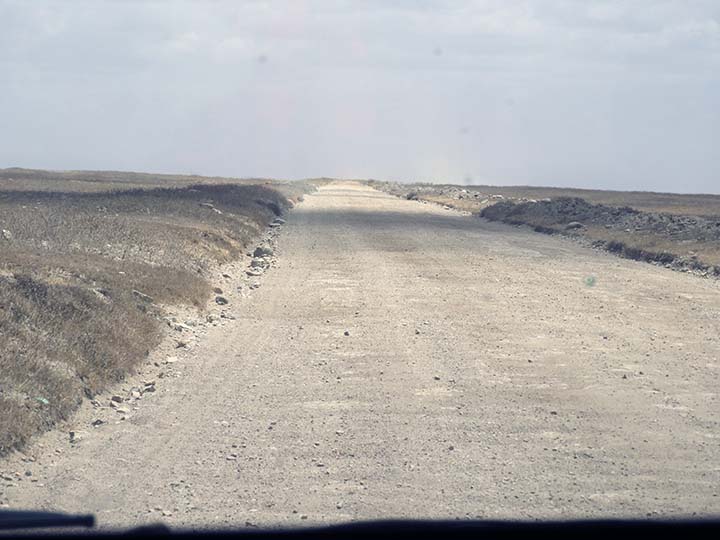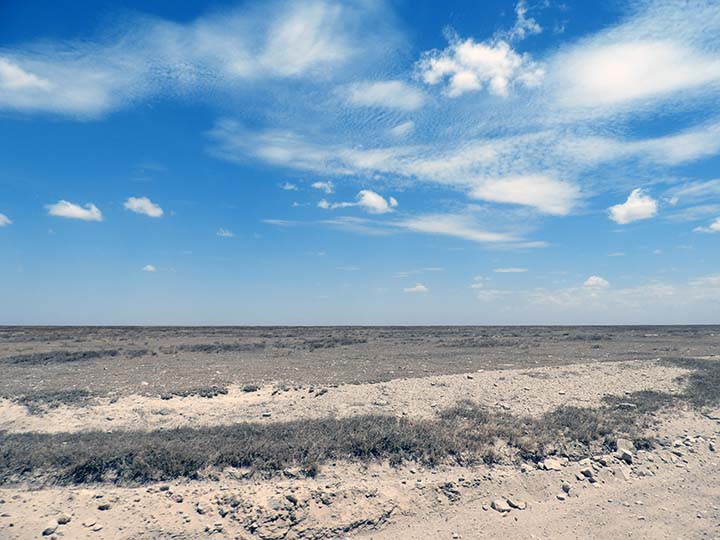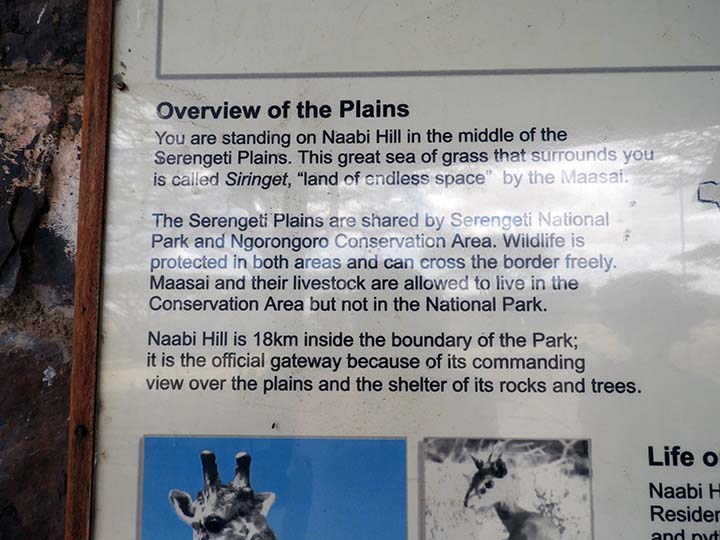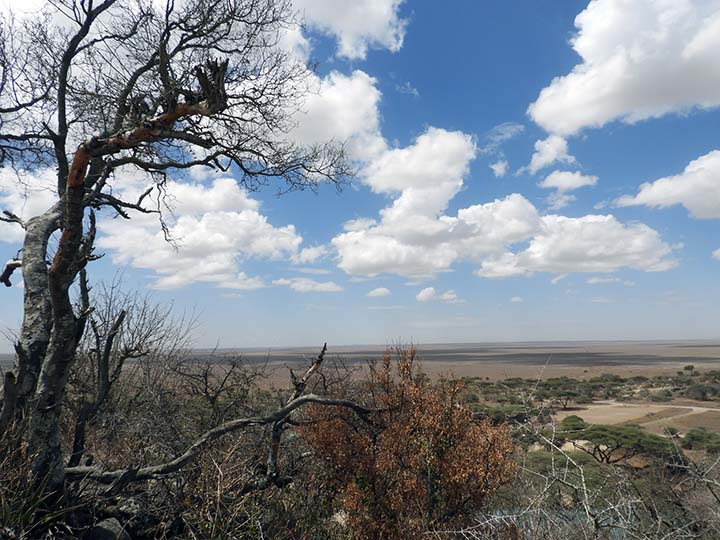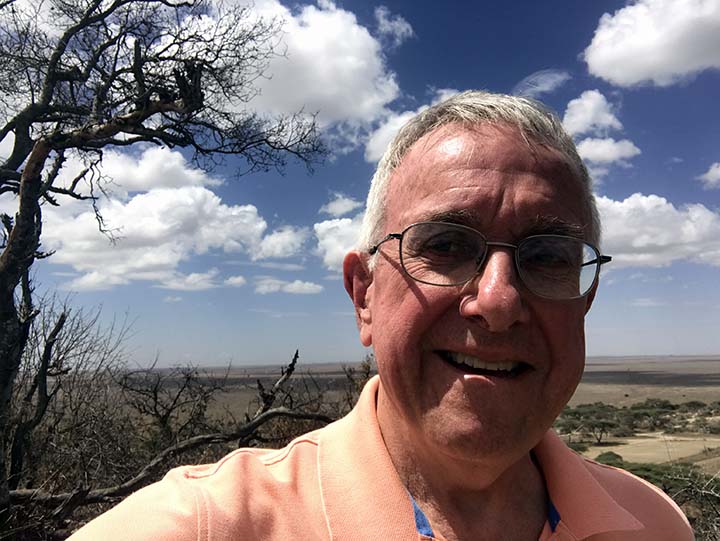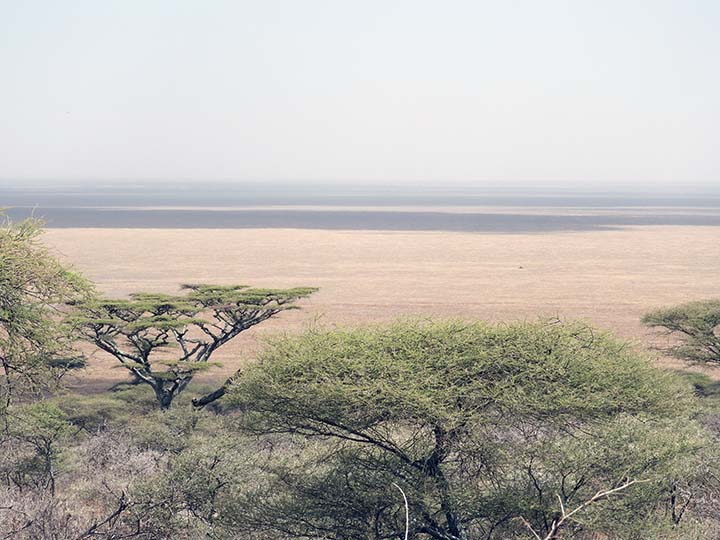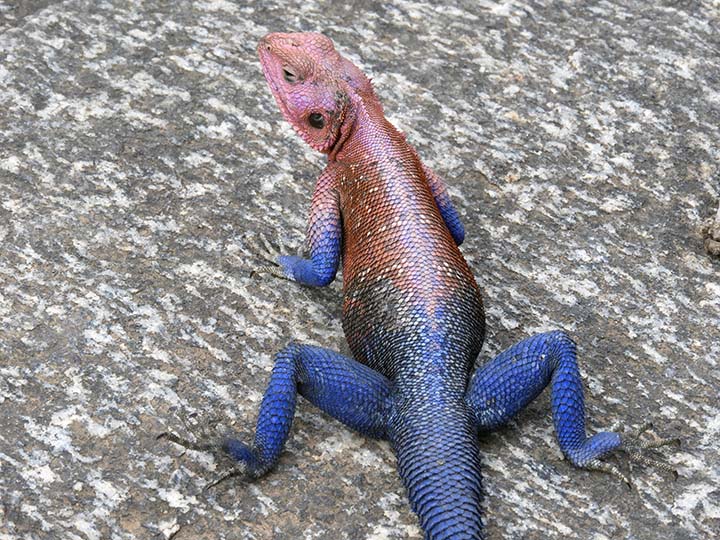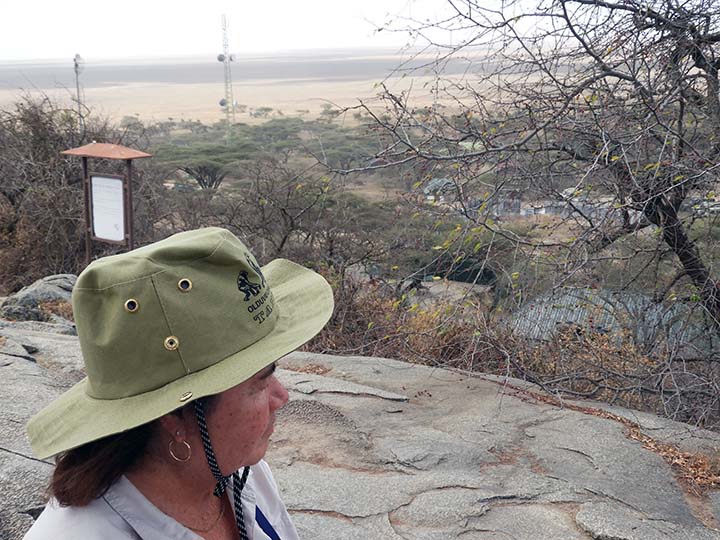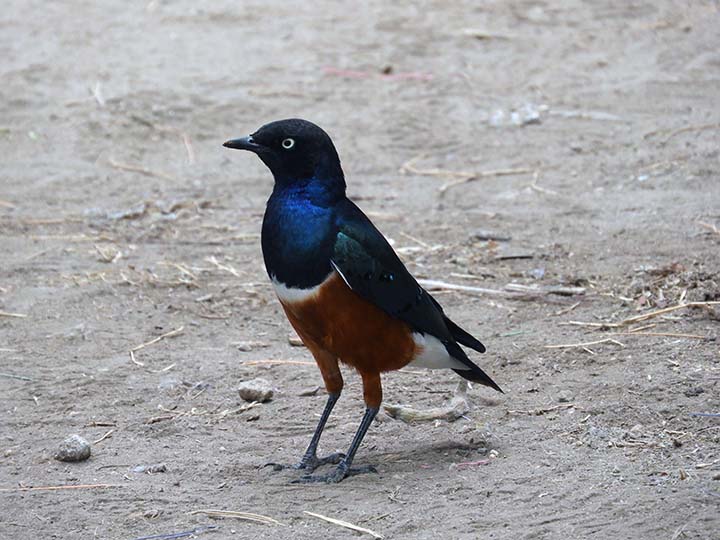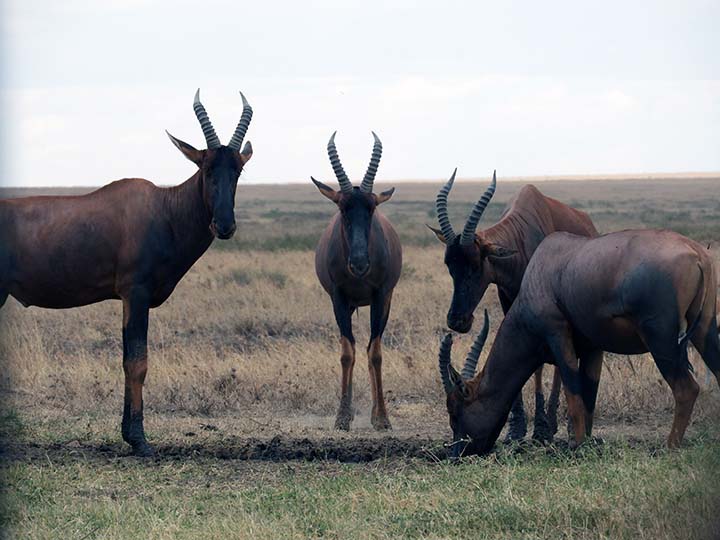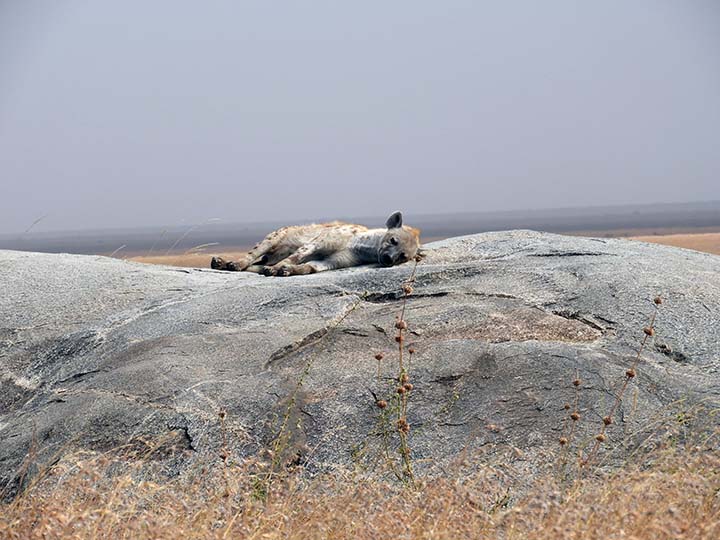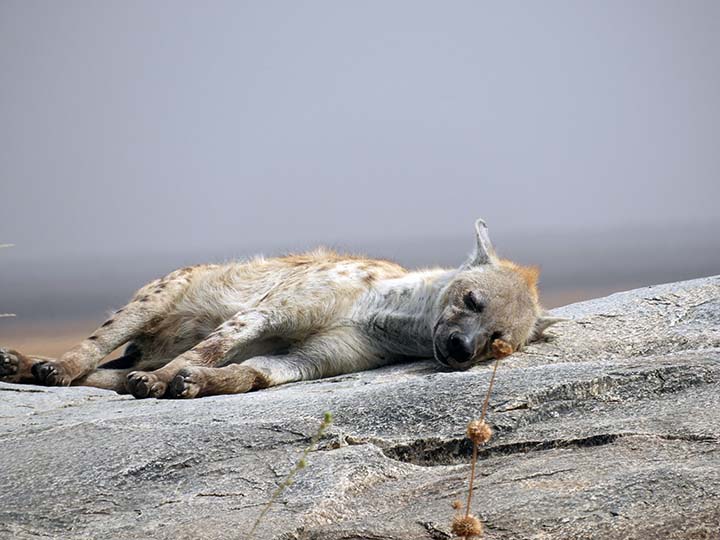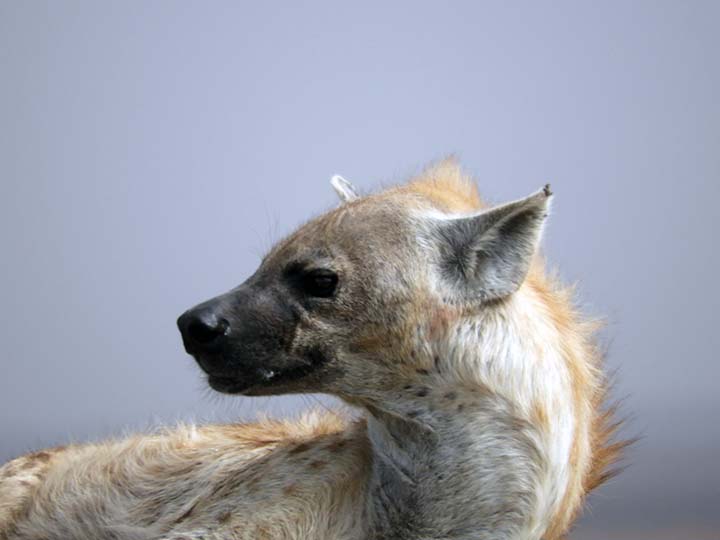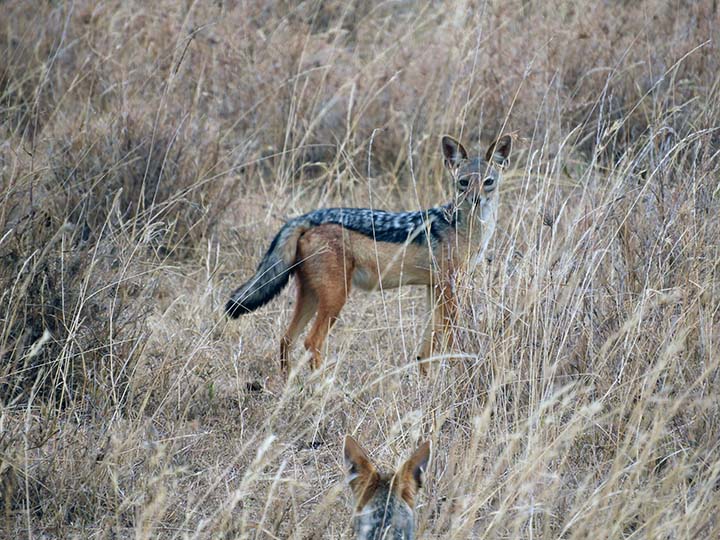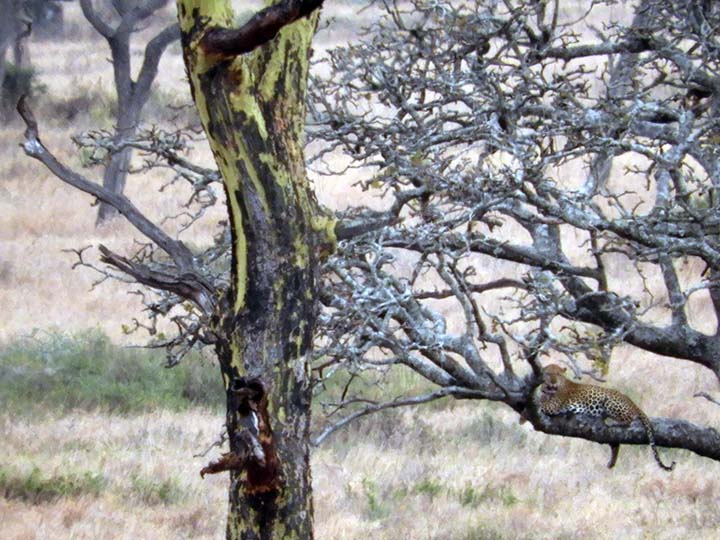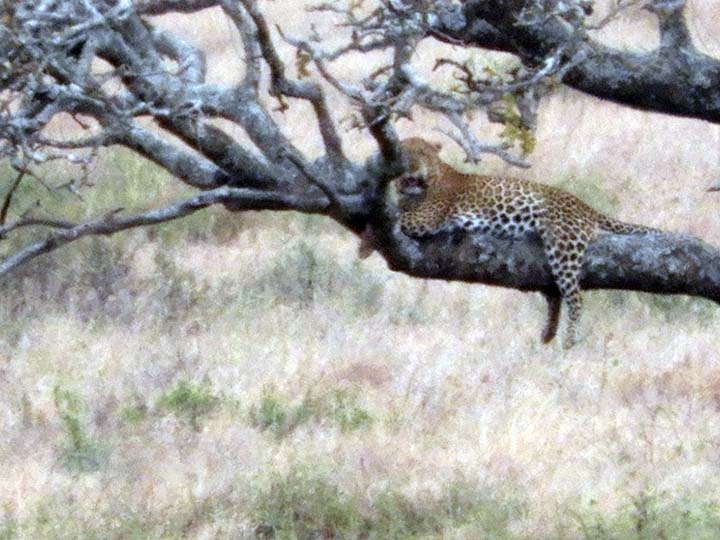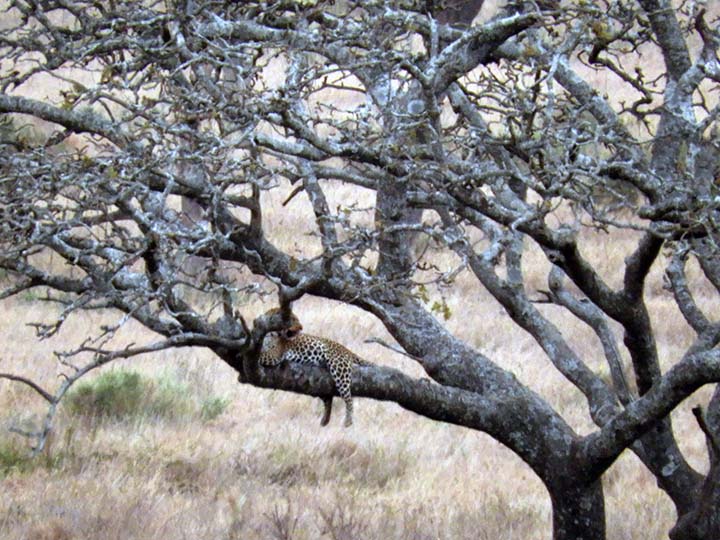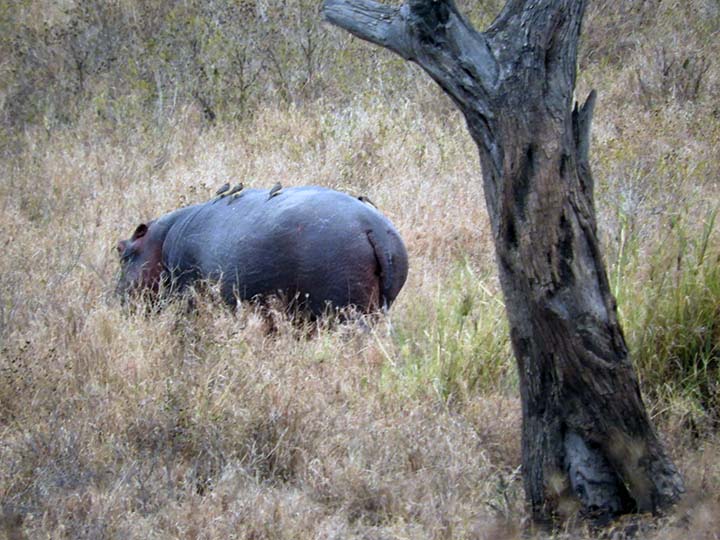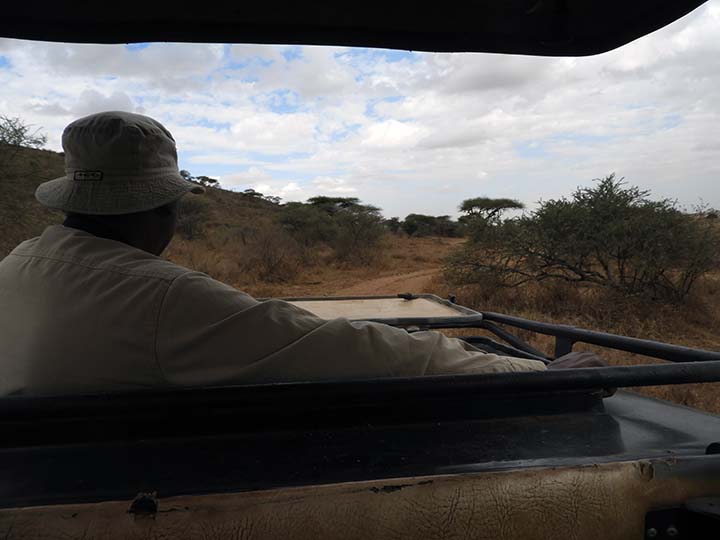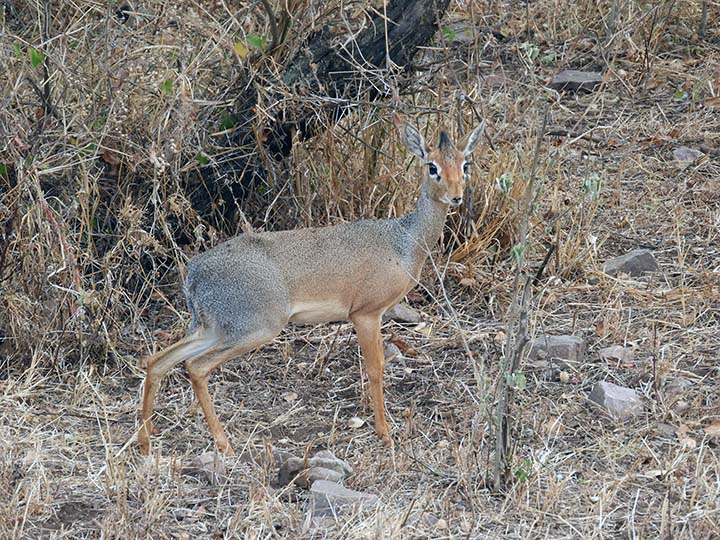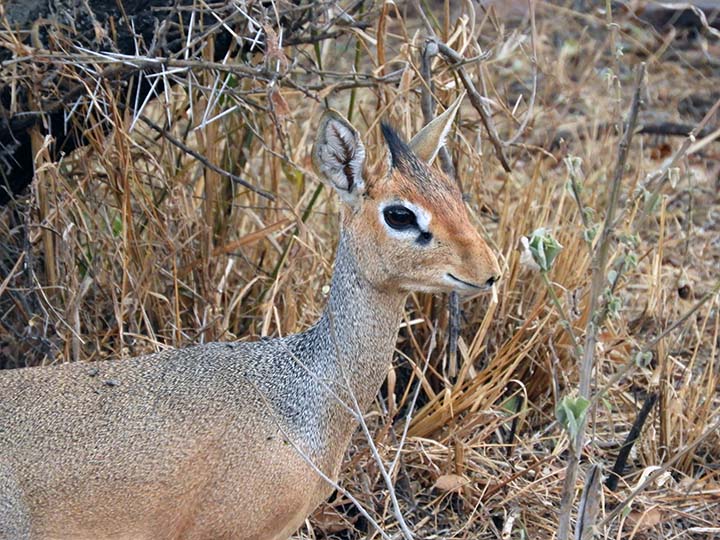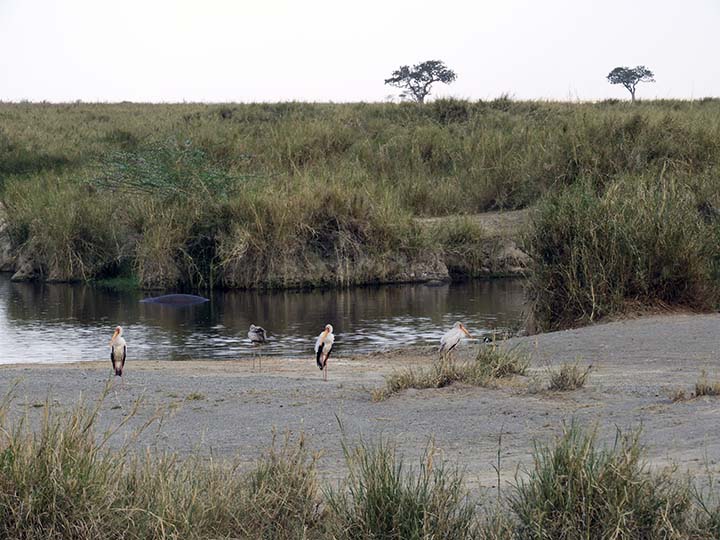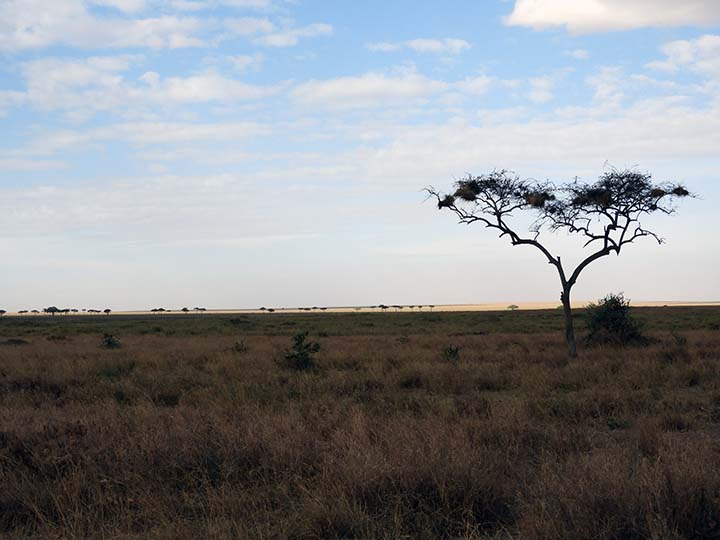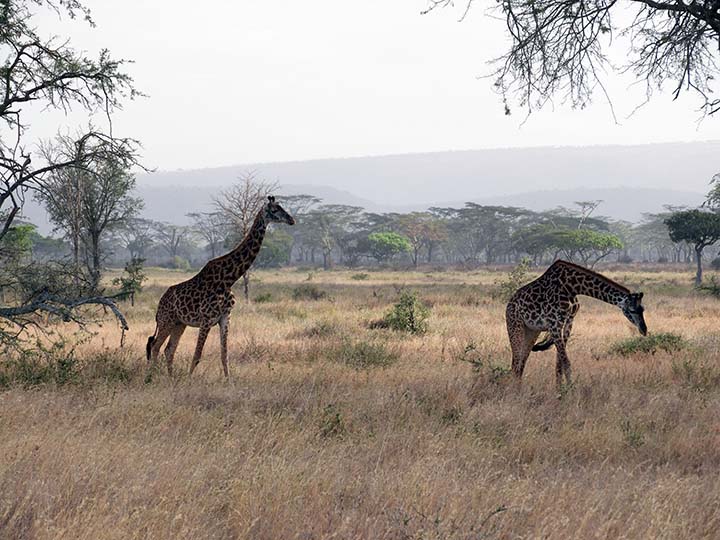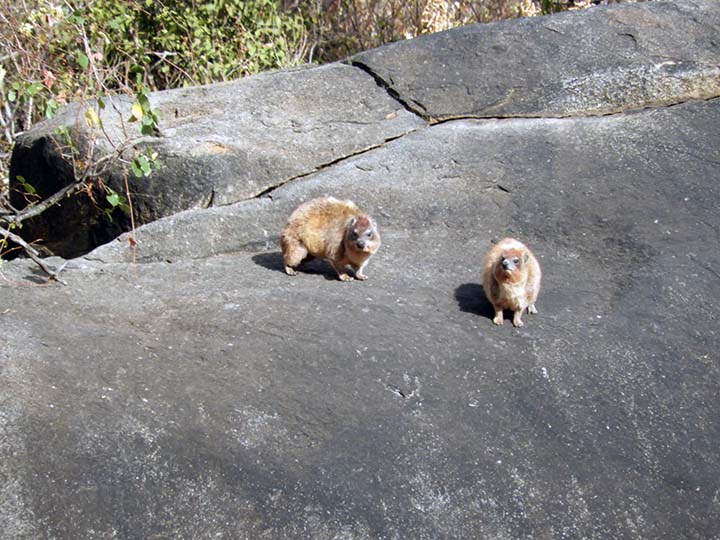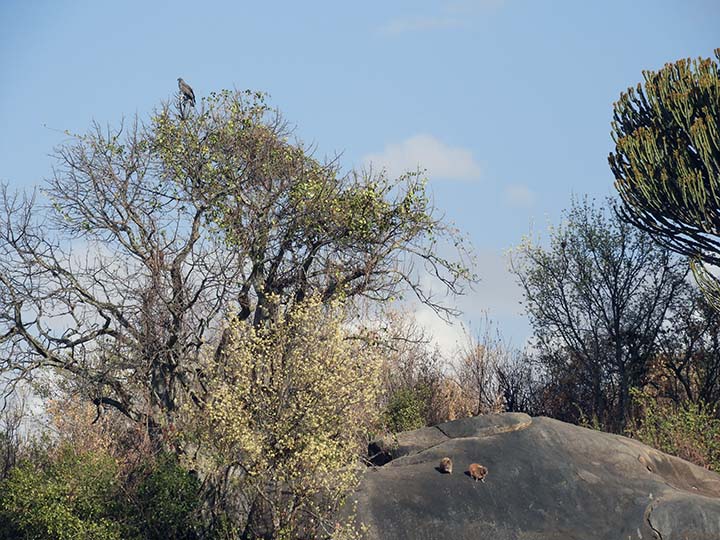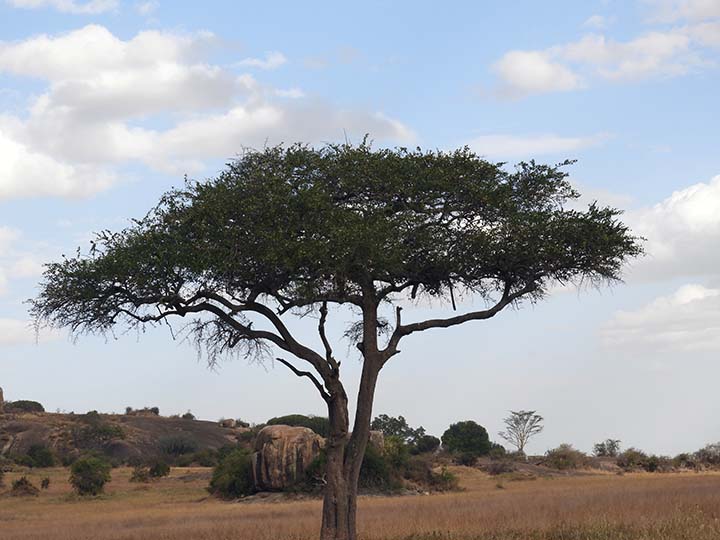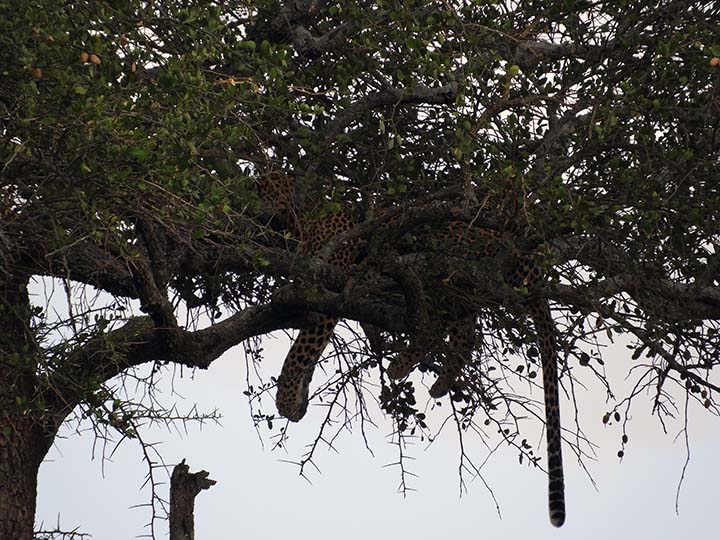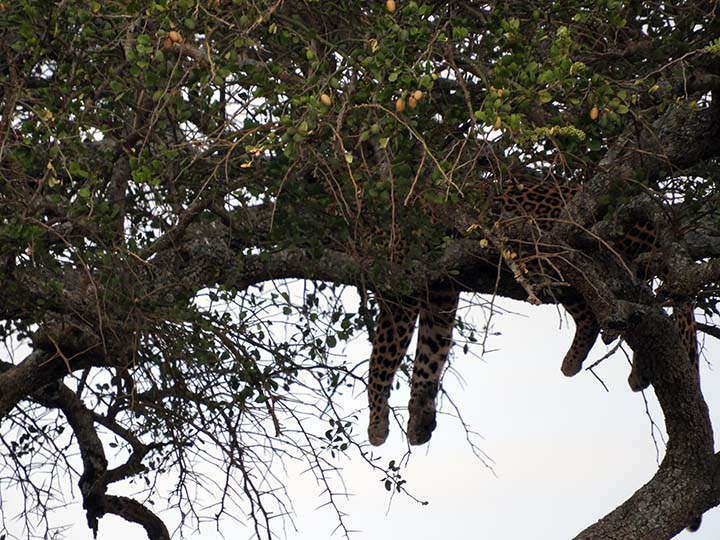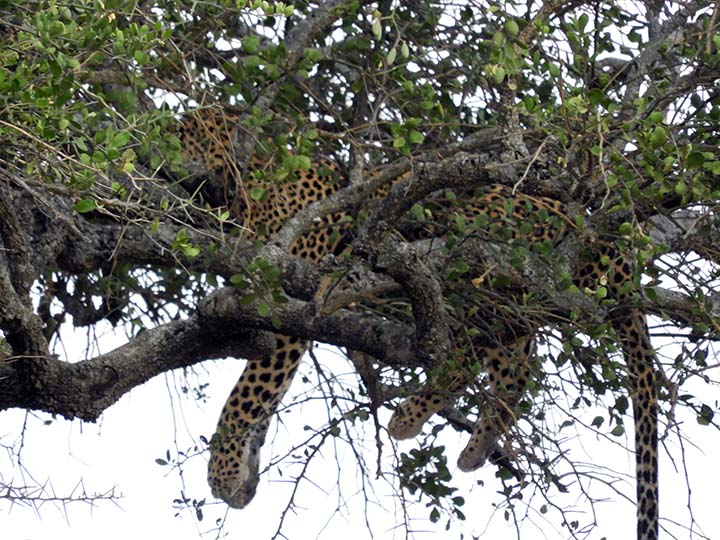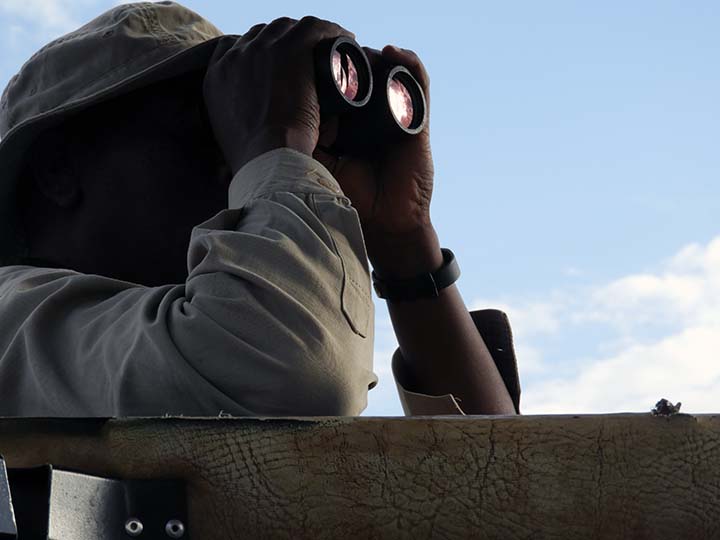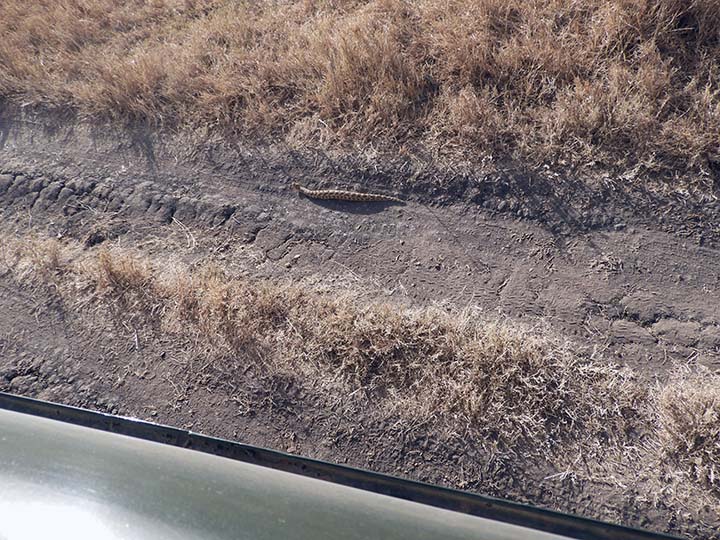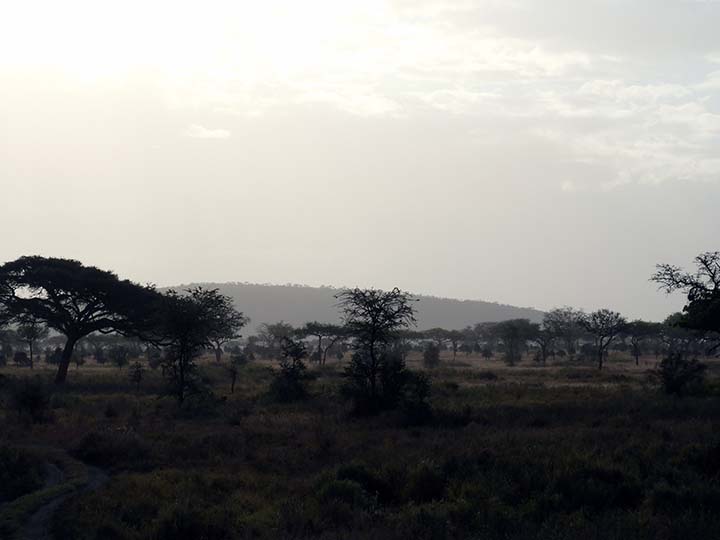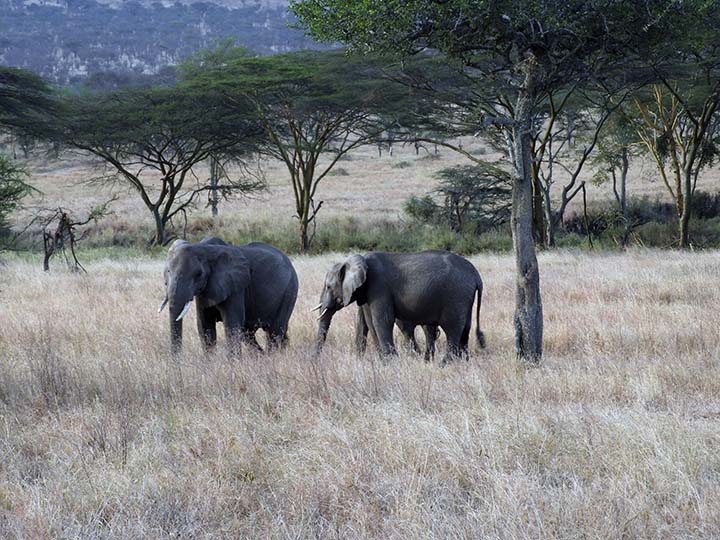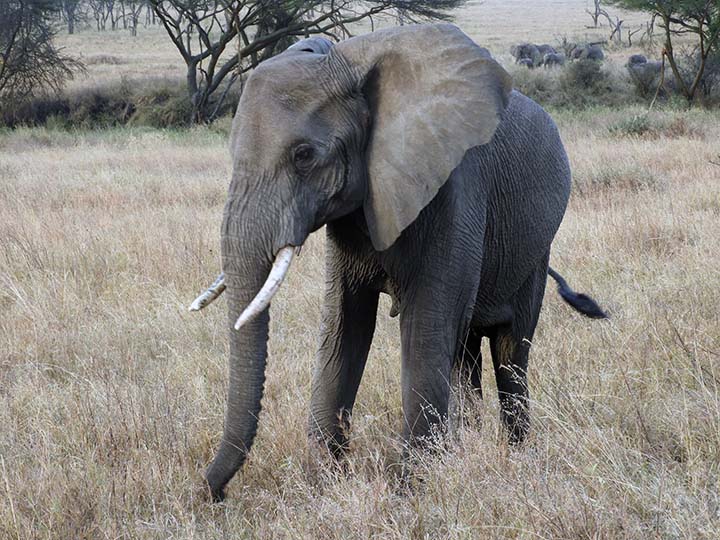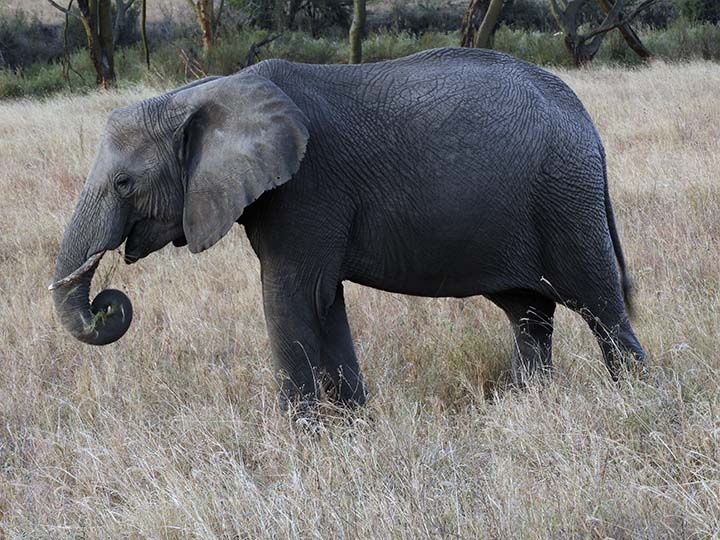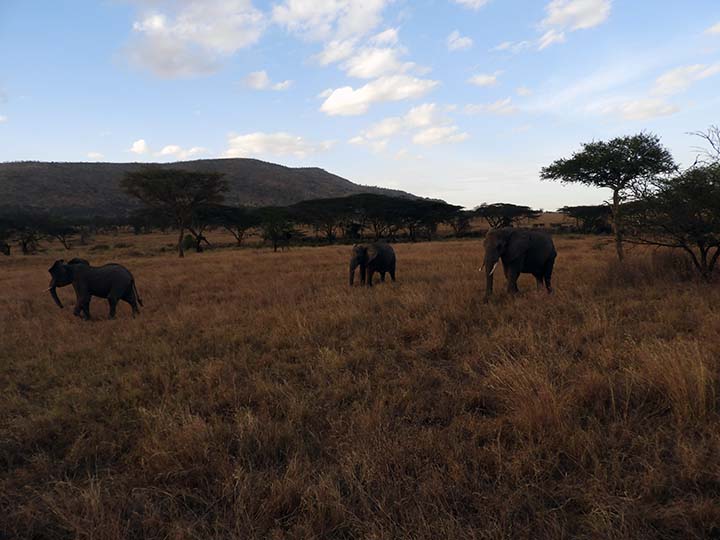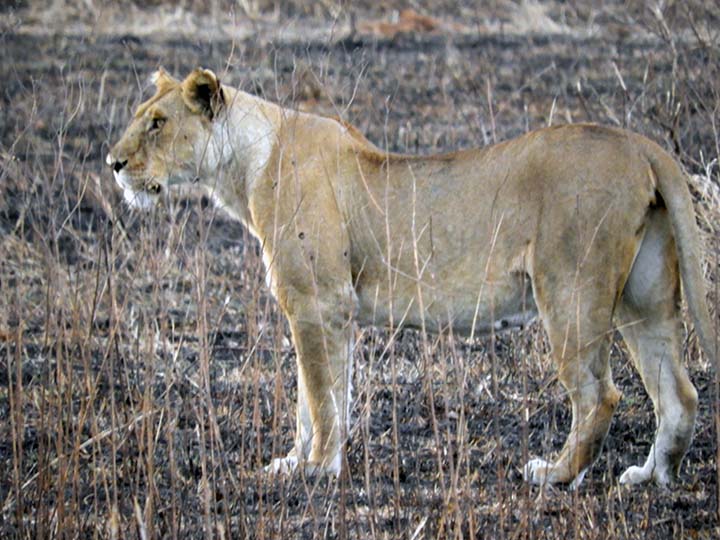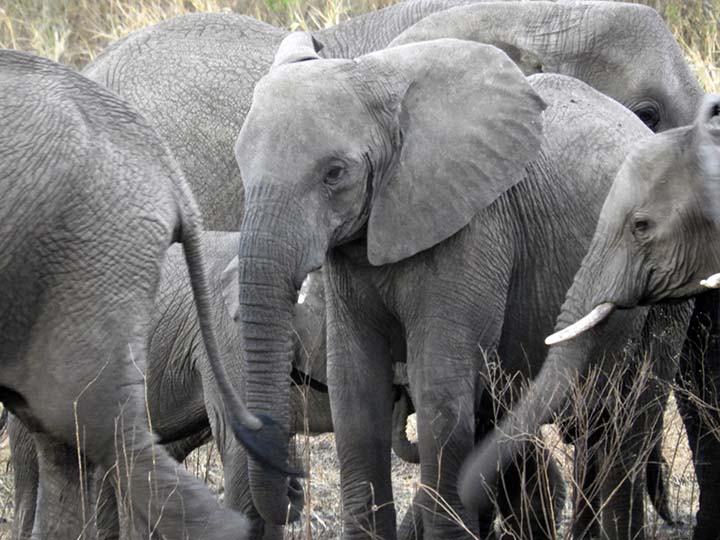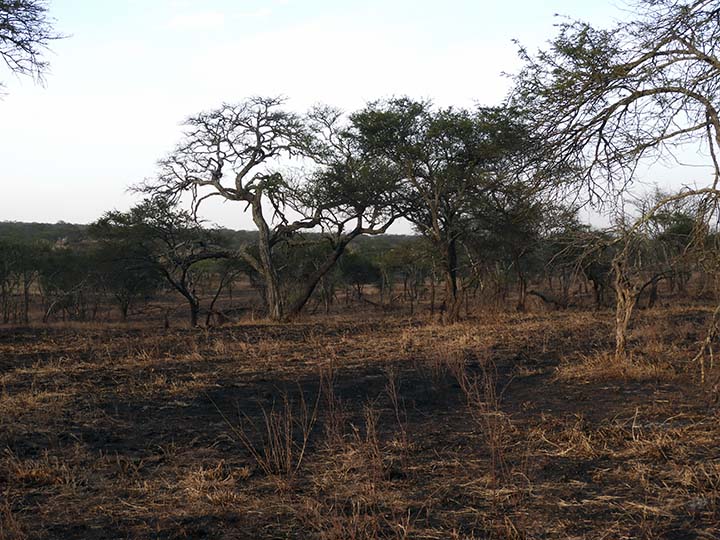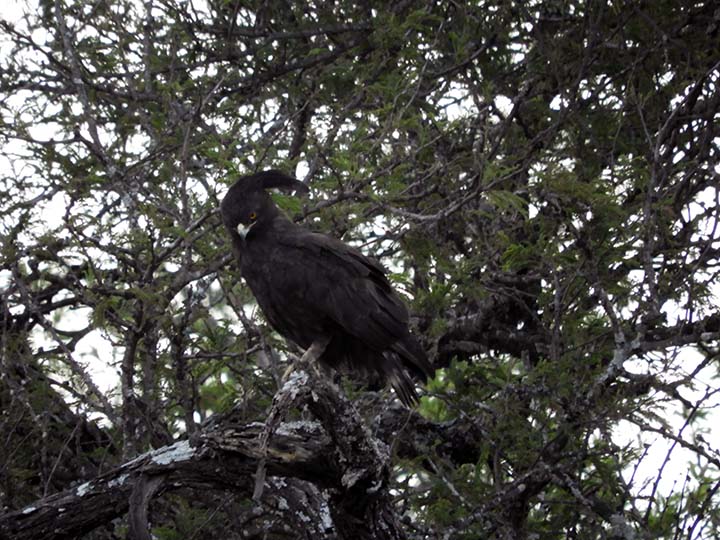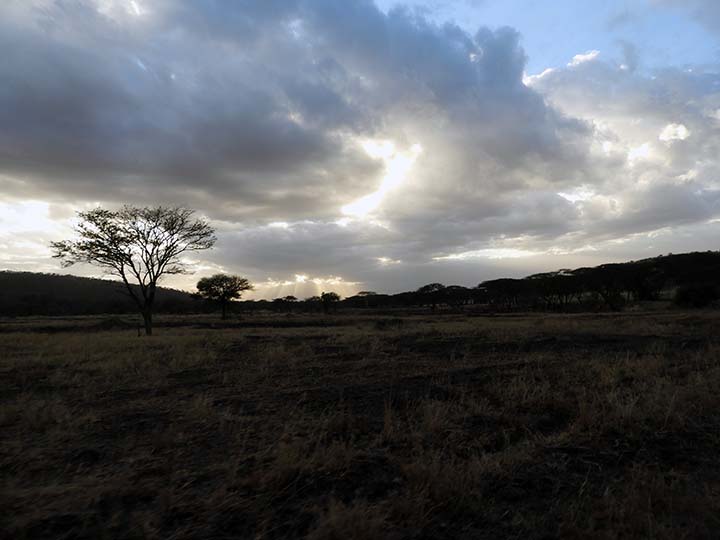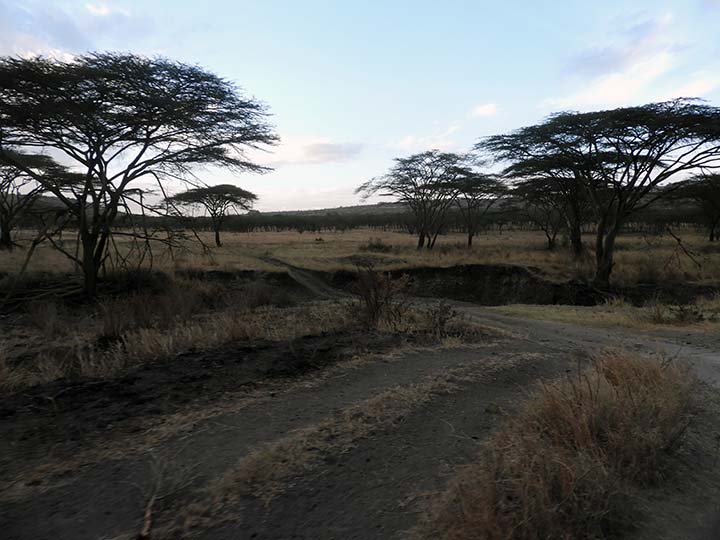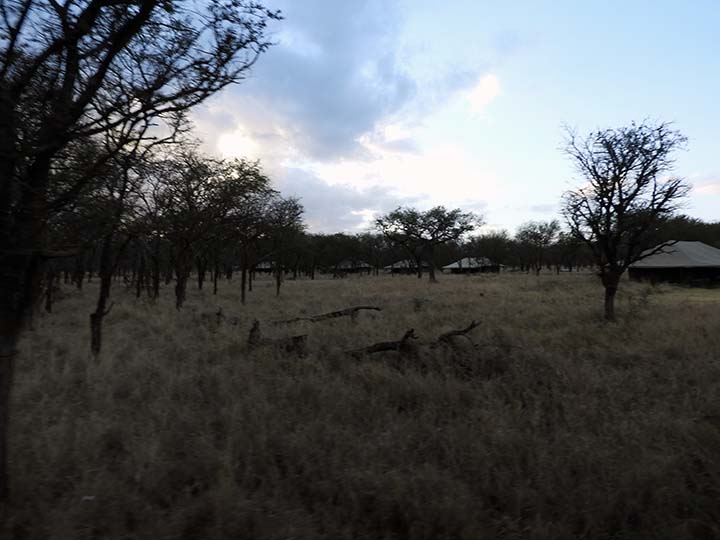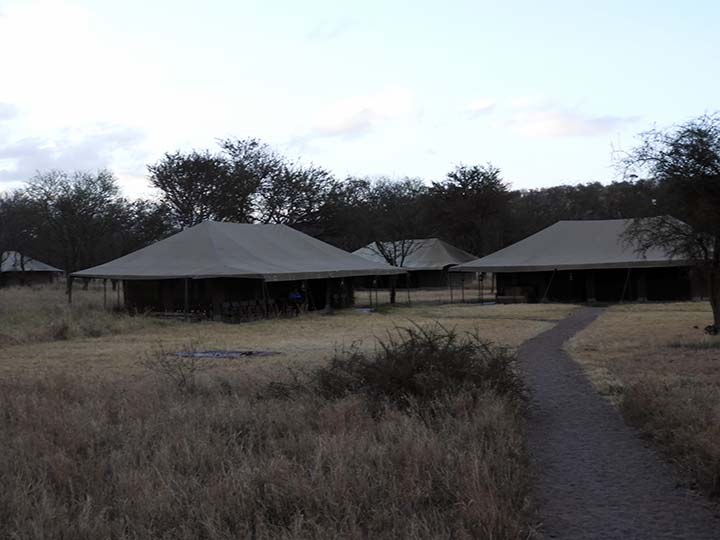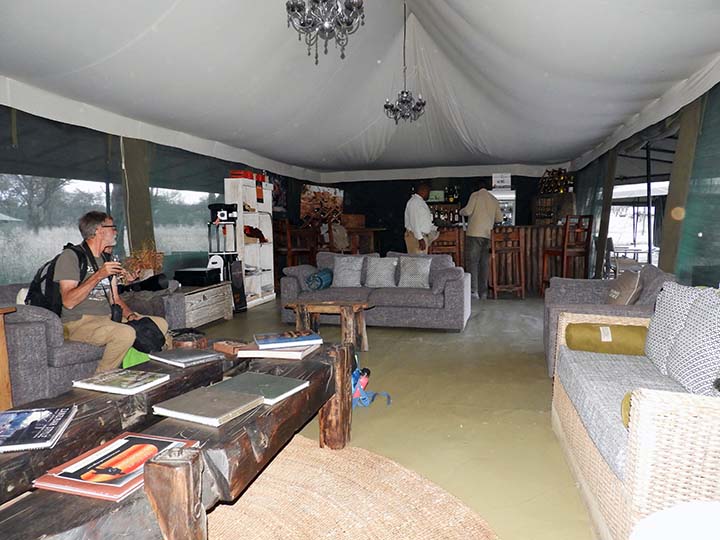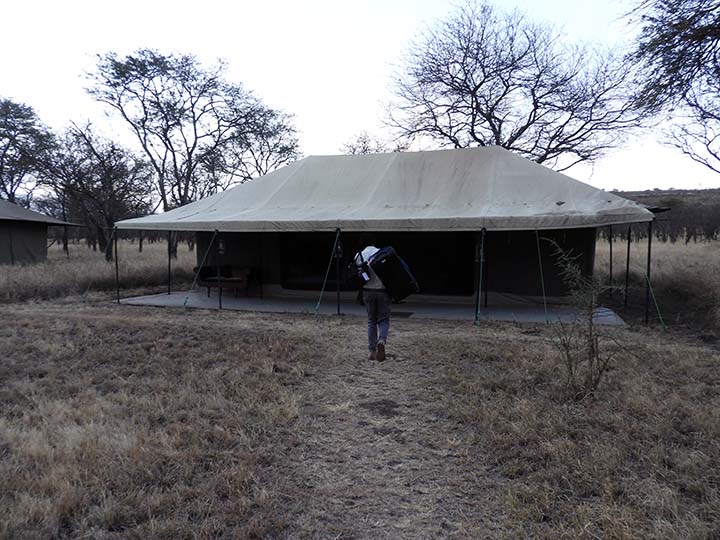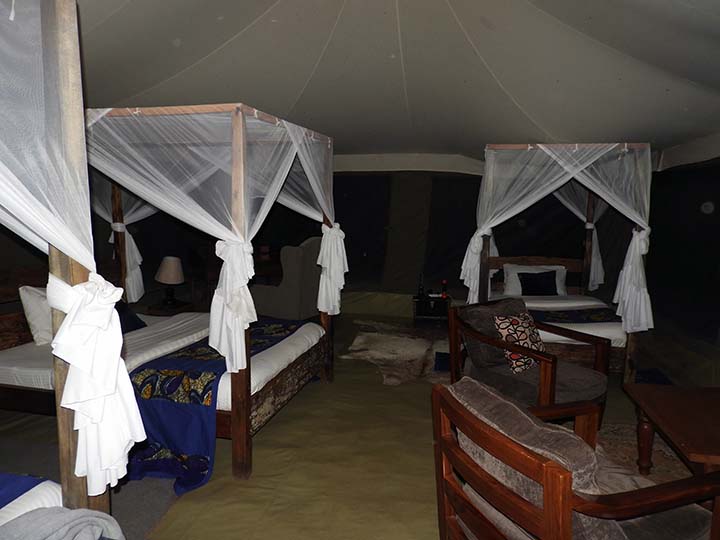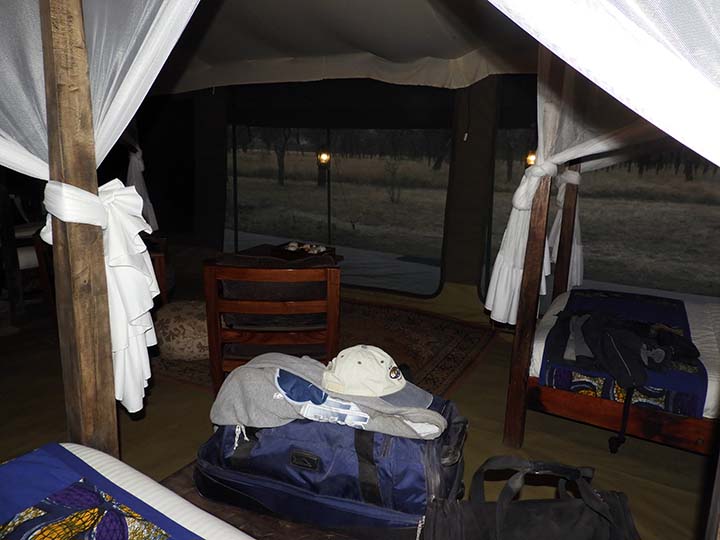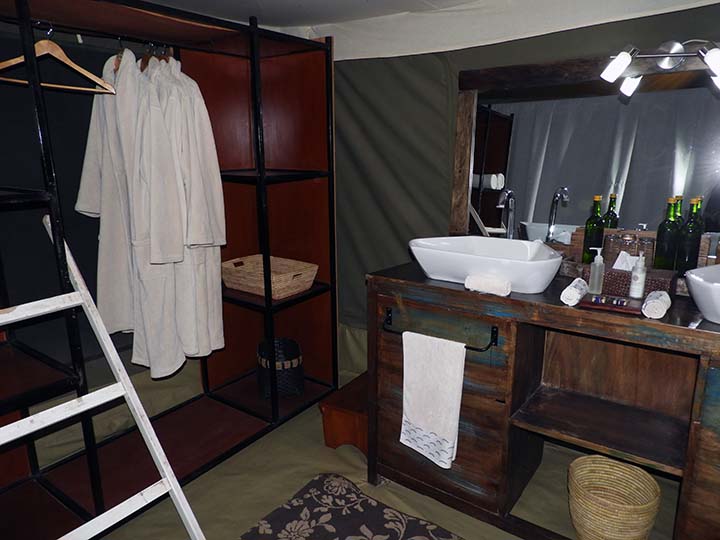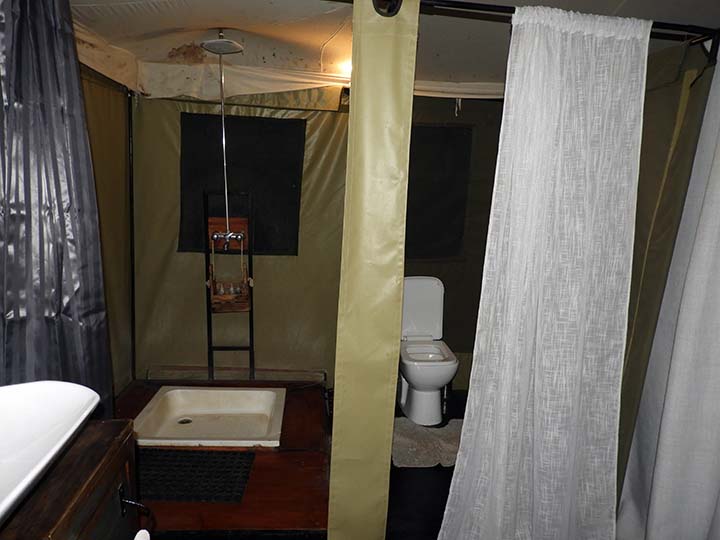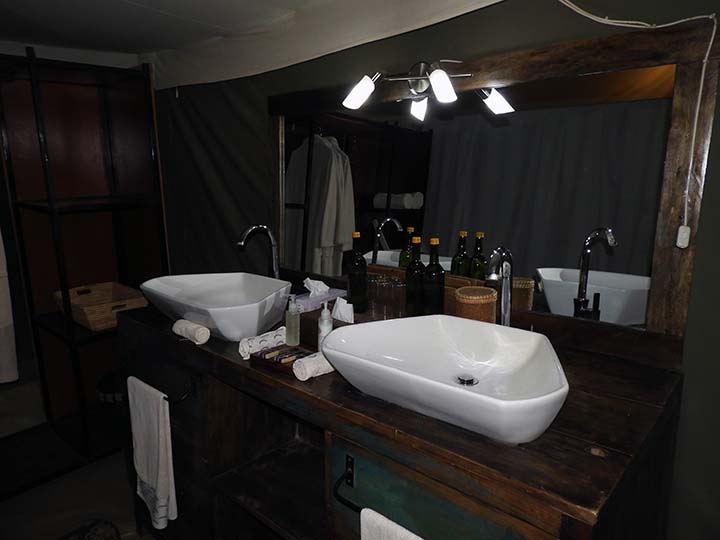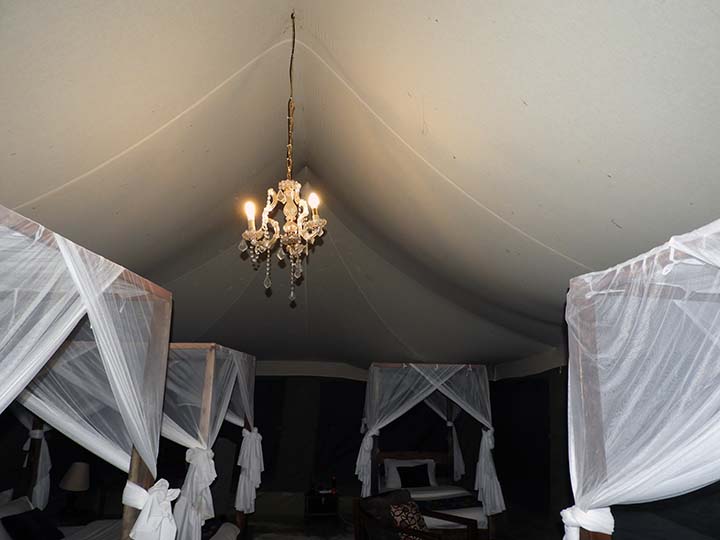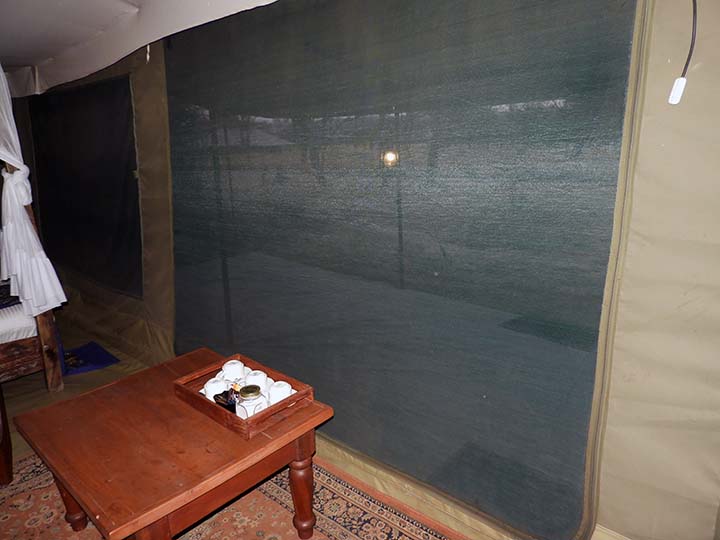|
It's become a struggle for me to describe exactly where and what the Serengeti is. According to Wikipedia, the Serengeti ecosystem is a geographical region in Africa, located in northern Tanzania, spanning approximately 12,000 sq mi.
But just try to find a map outlining the entire Serengeti ecosystem. You can find maps that show Tanzania's Serengeti National Park, but that park encompasses only part of the ecosystem. This map, which was drawn to illustrate the wildebeest migratory pattern, at least illustrates that the Serengeti ecosystem is larger than Tanzania's park, extending even north into Kenya where their Serengeti ecosystem national park is called Maasai Mara. I've begun to think of "the Serengeti" as something like "the South" in the USA. Everybody knows basically where it is, but just try to get everybody to agree on strict borders. Is Arkansas in the South? Sure, I guess, but why do all those people in Ft. Smith wear Stetson hats and cowboy boots? The South? Not the one I grew up in. Anyway, that's the Serengeti ecosystem up there in that map. Somewhere.
Ngorongoro is the loveliest volcanic crater I've ever seen.
Young elands. I believe I recall Kip mentioning that their numbers are increasing around here.
Yes, we're looking at you.
We're just enjoying the views of the Ngorongoro Crater as we drive away toward the Serengeti.
And there are nice views to be enjoyed.
Wait, are there signs of civilization under that acacia tree on the right?
Why yes, I do believe we have come upon a Maasai village.
We're spying from a distance. I feel like a peeping Tom.
This illustrates our vantage point. See the village down there on the left?
Another view from a little closer.
It's a nice morning.
And everybody's up and about.
The wash is on the line.
And the herd is on the move.
Everybody lives inside a ringed wall of protection.
I sure wouldn't want to bother them.
I'll just use my telephoto lens to peek in.
I think I might not fit in.
I'd have to buy a whole new wardrobe.
Let's stop spying and be on our way.
So long Maasai village.
It's been fun but we have other sights to see this morning.
Like giraffes.
Holy moley, just look at that!
Did you know a group of giraffes is called a tower?
This tower is tired of posing majestically for us.
Google images hasn't helped much with this one. I'm going to guess lesser spotted eagle. Marsha?
Oh my goodness!
We've arrived at the famous Olduvai Gorge, site of the discovery of some of the oldest human remains. It has been called "the cradle of humankind." This monument is sort of a welcome station to the area. That's paranthropus boisei on the left and homo habilis on the right. \
If you squint you can read that plaque. Or you can just read about Olduvai Gorge here.
They have friendly smiles.
The Olduvai Gorge or Oldupai Gorge in Tanzania is one of the most important paleoanthropological sites in the world; it has proven invaluable in furthering understanding of early human evolution. A steep-sided ravine in the Great Rift Valley that stretches across East Africa, it is about 30 mi long, and is located in the eastern Serengeti Plains in the Arusha Region about 28 miles from Laetoli, another important archaeological site of early human occupation. The British/Kenyan paleoanthropologist-archeologist team Mary and Louis Leakey established and developed the excavation and research programs at Olduvai Gorge which achieved great advances of human knowledge and world-renowned status. Let's go see the museum.
The Olduvai Gorge Museum was founded by Mary Leakey in the late 1970s. The museum was originally designed to house paleoanthropological artifacts from the surrounding area. After her death, the Olduvai Gorge Museum was put under control of the Tanzanian government's Department of Cultural Antiquities. During the mid-1990s, the J. Paul Getty Museum's Department of Conservation renovated and added to the museum. This included a new wing with exhibitions that were designed by the Getty Museum.
It's a nice place.
And its ampitheater overlooks a magnificent view of the gorge and surrounding area.
Oldupai means "the place of the wild sisal" (Sansevieria), in Maasai and apparently "Olduvai" is simply a misspelling that has lasted so long it's become the name of the place. Twenty-five kilometers downstream of Lake Ndutu and Lake Masek, the gorge cuts into Pleistocene lake bed sediments up to a depth of 90 m. A side gorge, originating from Lemagrut Mountain, joins the main gorge 8 km from the mouth. This side gorge follows the shoreline of a prehistoric lake, rich in fossils and early man sites. Volcanic ash from Olmoti and Kerimasi ensured preservation of the fossils.
This young man told us all about it.
It was difficult to pay attention to him talking about the local plants because I kept getting distracted by the view. His presentation was very interesting, though. That thing in his hand is a part of a local plant.
Homo habilis, probably the first early human species, occupied Olduvai Gorge approximately 1.9 million years ago (mya); then came a contemporary australopithecine, Paranthropus boisei, 1.8 mya, followed by Homo erectus, 1.2 mya. Our species Homo sapiens, which is estimated to have emerged roughly 300,000 years ago, is dated to have occupied the site 17,000 years ago.
This is a skeleton of what people looked like before they actually were people.
While traveling in German East Africa in 1911 to investigate sleeping sickness, German physician and archaeologist Wilhelm Kittiwake visited Olduvai Gorge, where he observed many fossil bones of an extinct three-toed horse. Inspired by Kattwinkel's discovery, German geologist Hans Reck led a team to Olduvai in 1913. There, he found hominin remains which were later radiocarbon dated to 17,000 BP. Four more expeditions were planned, but World War I prevented their start. After the war, as Tanzania came under British control, Louis Leakey visited Reck in Berlin and viewed the Olduvai fossils. Louis Leakey became convinced that Olduvai Gorge held stone tools, thinking the deposits were of similar age to the Kariandusi prehistoric site in Kenya. Reck and the paleontologist Donald McInnes accompanied Louis Leakey in his 1931 expedition, where Louis found a number of hand axes close to camp soon after their arrival. Mary Leakey first visited the site in 1935, joining Louis and Percy Edward Kent. Subsequent visits were made by the Leakeys in 1941, 1953, 1955 and 1957.
The site is significant in showing the increasing developmental and social complexities in the earliest humans, or hominins, largely revealed in the production and use of stone tools. Prior to tools, evidence of scavenging and hunting can be noted—highlighted by the presence of gnaw marks that predate cut marks—and of the ratio of meat versus plant material in the early hominin diet. The collecting of tools and animal remains in a centralized area is evidence of developing social interaction and communal activity. All these factors indicate an increase in cognitive capacities at the beginning of the period of hominids transitioning to hominin—that is, to human—form and behavior.
The location is "FLK" which is a little awkward. See, Louis Leakey's first wife was named Frida, and she joined him at this site, making several important discoveries. In fact, they even named the site in her honor: Frida Leakey's Karongo ("gully"), or FLK. But then in 1933 back in Cambridge, Louis met the lovely 20-year-old Mary Nicol, they fell in love, and a month after Frida gave birth to a son, Louis asked her for a divorce. There was a big scandal but it blew over eventually and soon Mary Leakey was digging with Louis in Frida's gully, leading to her discovery of Paranthropus boisei on July 17, 1959. It was the oldest hominid fossil to have been discovered at that time and it was big news all over the world. If you want to learn more, like how it got its name and how it got its other name "Zinjanthropus boisei" or as they liked to call the little guy, "Zinj," and what it really means and what it really doesn't mean, you just go ahead and click on that Paranthropus boisei link up there and knock yourself out.
But our guide isn't interested in juicy scandals and naming controversies -- he's just pointing out where excavations still take place today.
More text you can read to your heart's content.
Apparently we share ancestry with this guy.
A clear shot of a weaver bird nest.
There's a bird up there on top of that tree. See it? Isn't it exciting?
That's about enough of Olduvai Gorge for one day.
Let's get in our Land Cruisers and be on our way.
Our drivers are employed by Maasai Wanderings, a Tanzanian Safari company, which is paid by Road Scholar to provide our drivers/supplementary guides.
Just look at our luggage all packed in there safe and sound. There were two of these vehicles for the seven of us Road Scholars.
We've been on the Serengeti Plain for some time today, but now we're officially entering the Serengeti National Park.
Where the Maasai live.
And where the roads are long and rough and flat and dusty.
That's a plain all right.
Fortunately a hill popped up right out there in the middle of the plain, so we stopped and had a look around. Nice overlook. It's called Naabi Hill.
See? Told you.
Our hotel packed picnic lunches for us. Yummy stuff.
The view was terrific if you like flat.
He must like flat because he sure seems to be enjoying himself.
More Serengeti.
Go on, Bill, climb up there on those loose rocks and then fall and break a leg out here in the middle of nowhere. Go on, I dare you. (I didn't fall, but I did start thinking about what would happen.)
Well there's a colorful little guy.
It's an agama agama. I think he knows he's pretty.
Mandy and I were sure this was the way back down, but it wasn't.
Starlings should look like this in the USA.
I think that's a hartebeest. He sure seems interested in us.
Looks like they've found water.
Awww. It's a tired hyena that can't seem to find a soft spot to rest.
Nap time.
Wait, what's that over there?
Lunch?
Kip says there are small animals out there. Let's grab the camera with the telephoto lens.
Jackals!
And oh yeah, there's a bigger animal too.
Mr. Lazy Leopard demonstrates the proper method of resting in a tree.
It's a good place to check the menu for the next meal.
Mr. Hippo has some passengers on his back.
I suspect he appreciates a little back scratching now and then.
Kip is constantly searching for the next amazing animal to show us.
I think he's spotted something.
It's a dik dik.
The name comes from the unusual alarm call that the females commonly makes, which sounds like a wheezing and whistling “zik-zik” or “dik-dik”. These antelopes were called “dik-diks” by the early settlers and hunters as they ruined the hunter's chances of shooting any larger game thanks to their alarm calls. In other words, they could be real dik diks.
There are at least two in that picture. Yes there are.
Cute little fella, isn't he?
What's this lounging in the shrubbery?
Looks like a large cat. We'll leave her alone.
Storks and a big rock in the water. With eyes and ears.
Serengeti plain.
It's just one thing after another on this drive.
Every once in a while out here in the flat Serengeti plain we would spot a kopje. They are large stone outcroppings that were formed when the soft volcanic rock and ash that covers Serengeti were eroded away to expose the extremely old metamorphic rock below.
An interesting mammal exclusive to the kopjes is the Rock Hyrax. Hyraxes are about the size and shape of a football, and eat grass and herbs around the kopjes.
See them up there? They're watching us. And look up in the tree...it's a big bird. Two species in one photo.
So we're driving along and suddenly the Land Cruiser halts and Kip says, "Look, over there! A leopard!" "Where?" "In the tree!" Now I ask you, do you see a leopard in that tree? Do you see anything in that tree that would even slightly indicate the presence of a leopard? Well, I didn't see it until Kip pointed out that tail hanging down. See it now?
Does this help?
Yep, there's a leopard up there all right.
He's got spots and everything.
Seriously, if you ever find yourself out strolling on the Serengeti Plain, be careful which trees you walk under.
And take Kip along. He can spot anything.
The roads are rough out here, but spotting all the wildlife makes it worth the discomfort.
Eeeeek! A snake./
Just right out there slithering along the side of the road, it's a puff adder, one of the 10 deadliest snakes in Africa. Let's stay in the vehicle.
The light is beginning to wane. Wonder if we'll spot any more animals?
This giraffe appears to be looking for a nice place to rest for the night.
Elephants, too.
They've been scratching their backs against that tree, which is great for the elephants but not so great for the tree.
Backs all scratched now.
Just looking for a nice place to rest.
Maybe over here.
Because the sun's going down soon.
She's watching all this unfold.
The herd is gathering.
C'mon, buddy.
Remember how I said the back scratching isn't good for the trees? The elephants wreak havoc on forests.
Lots of ruined vegetation.
I think that's a long-crested eagle.
And I also think the sun's going down.
We need to find a place to stay for the night.
Do we really want to be out here in the dark?
Look! A campground! It's called Naona Moru Camp.
With really big tents.
Really big, very nice tents. This is the reception tent.
And that's my very own personal tent for the next two nights.
I have plenty of beds to choose from. I think this thing will sleep eight, but I'm the only guest tonight.
See the canvas walls? See the screen? Do you know what animals are lurking out there all around? Do you?
But I'm tired and I'm pretty sure the lions and elephants and puff adders weren't looking for a bed like this.
I've never stayed in a tent with bath robes in the closet.
What a nice shower over there on the left. There'll be hot water in it for about an hour in the morning, so be sure to time things carefully.
A tent with a fancy bathroom. Those bottles with orange caps contain the only water that's safe to drink or brush teeth with.
I am staying in a tent with a chandelier. In Africa. On the Serengeti Plain. With wild animals all over the place.
We're not allowed to go out there without an escort.
But I'm getting hungry, so I wave my flashlight at the mess tent and one of the staff comes to get me.
And I enjoy chatting with Marsha and the other Road Scholars by the campfire. This is GREAT!!
|

